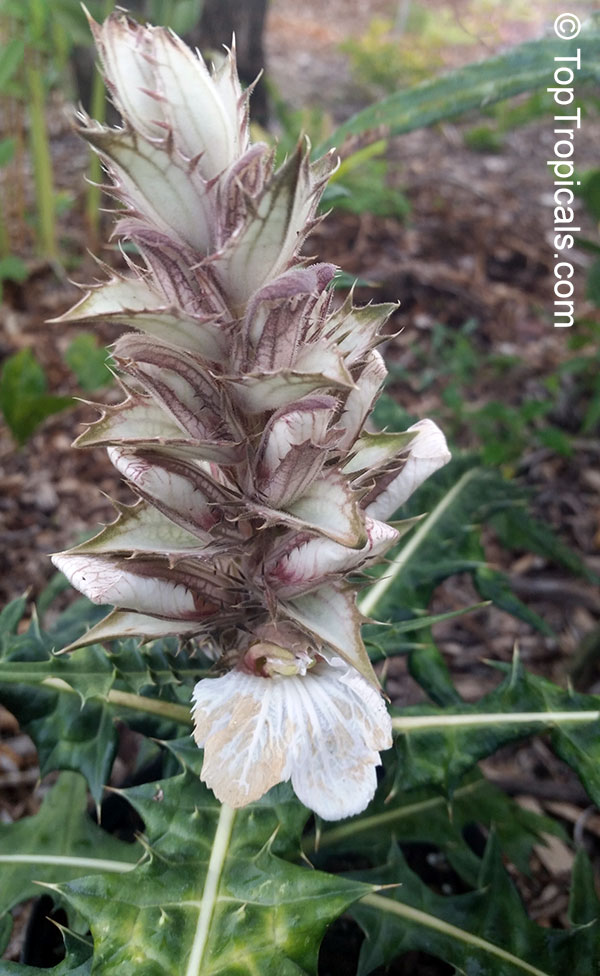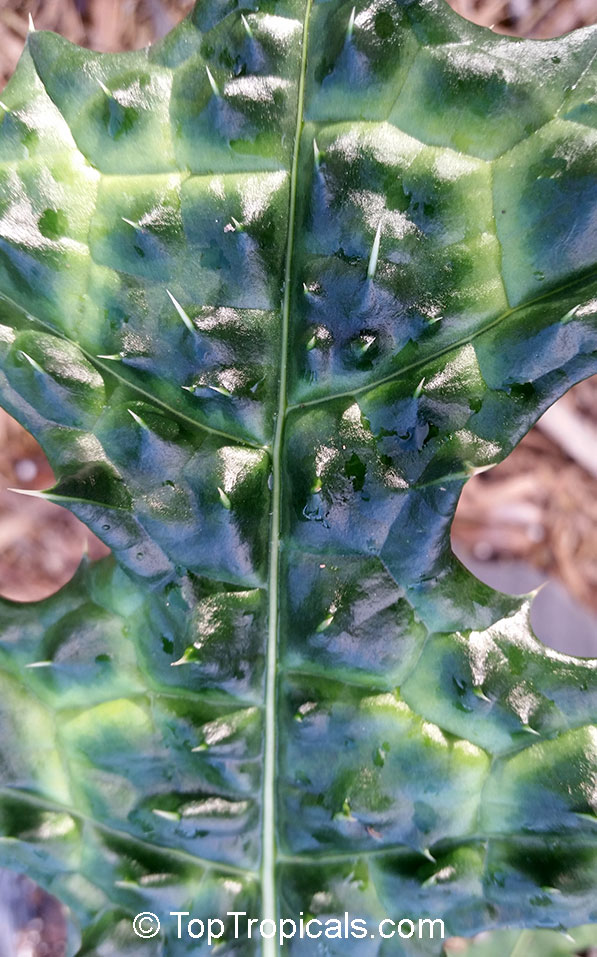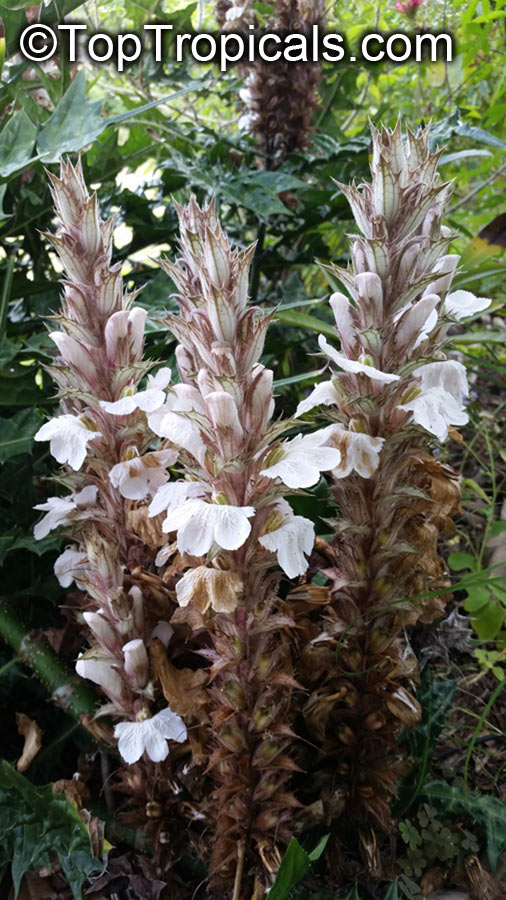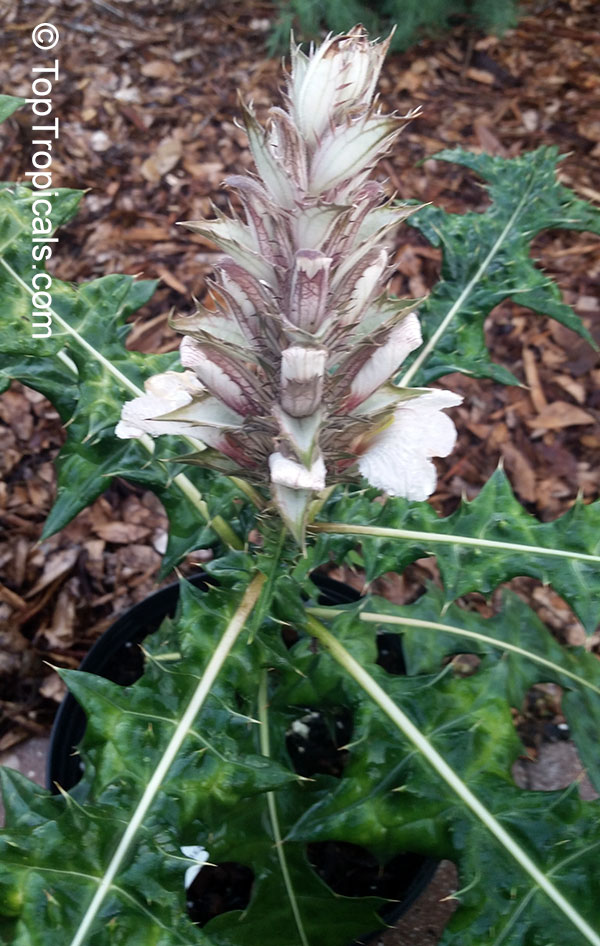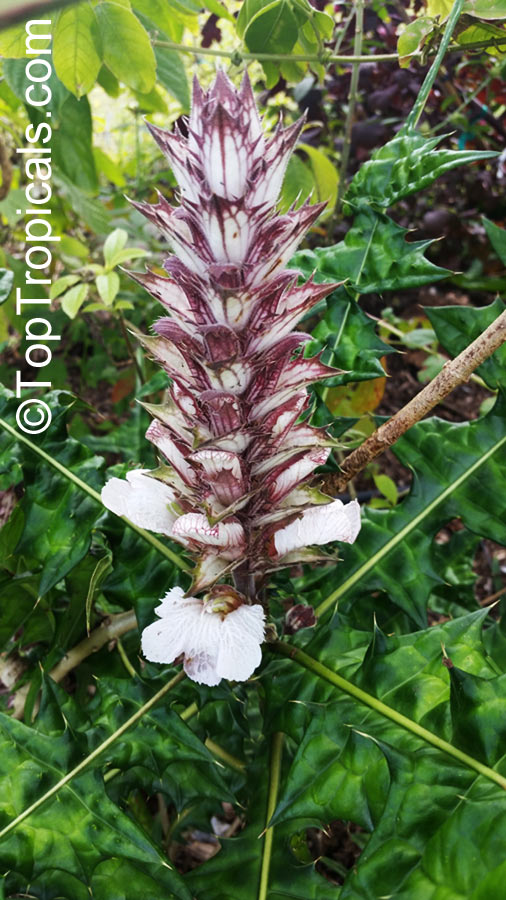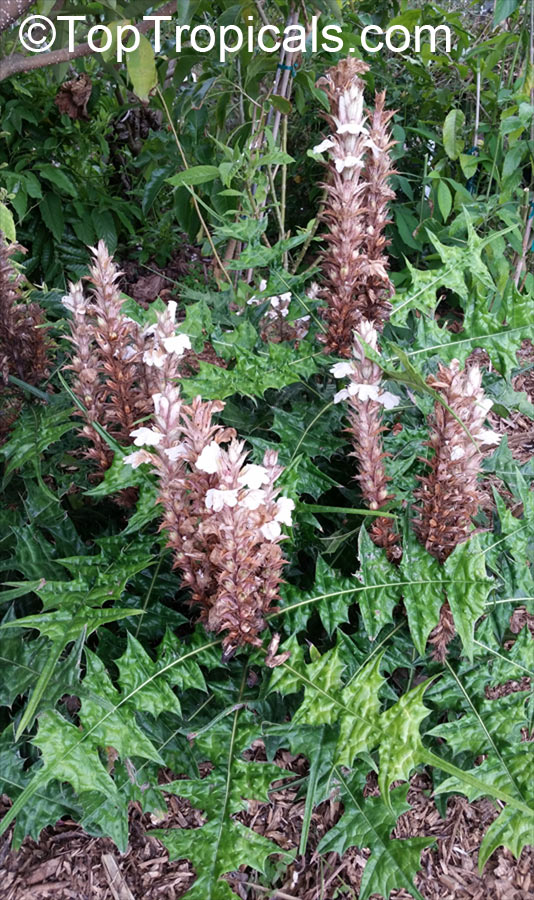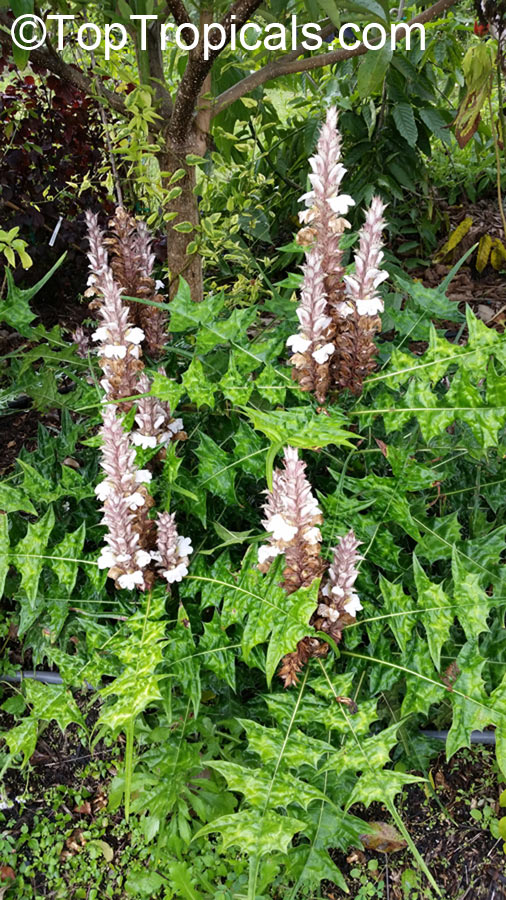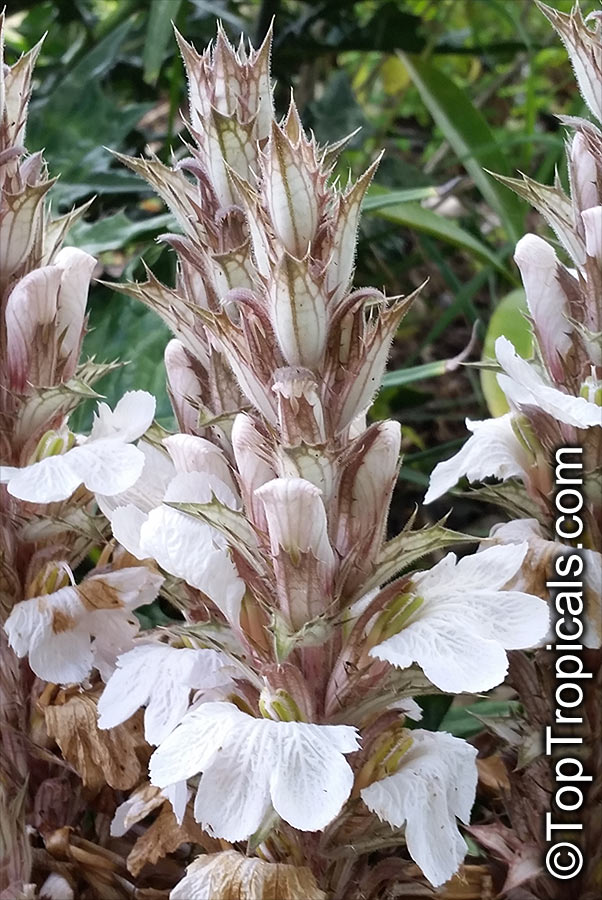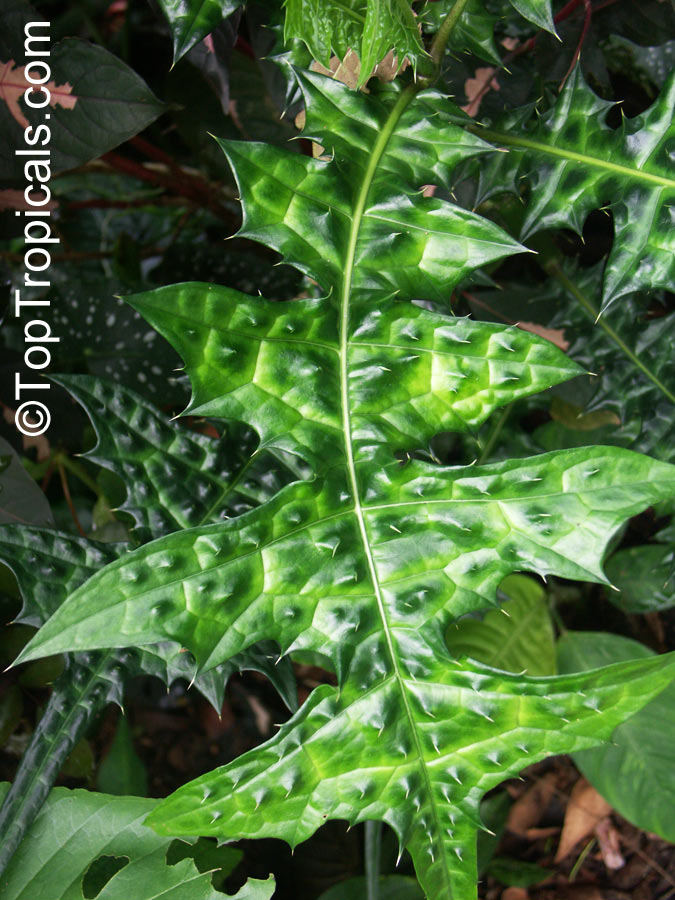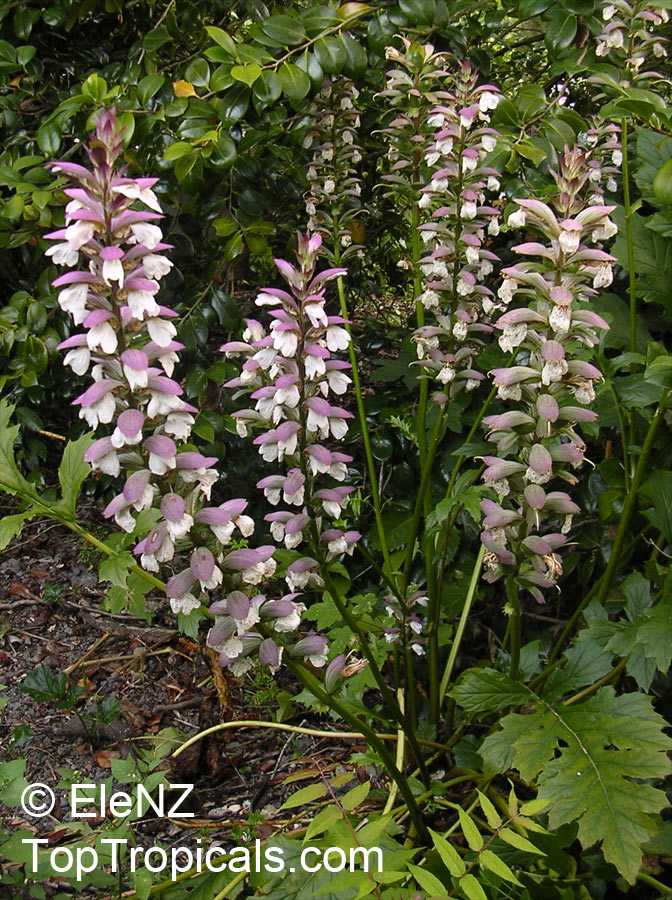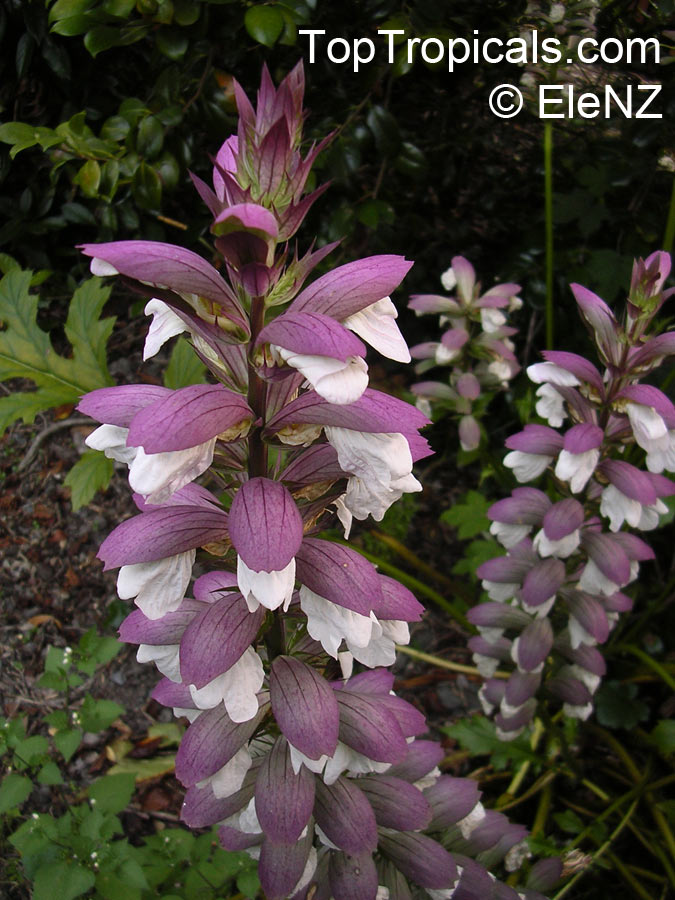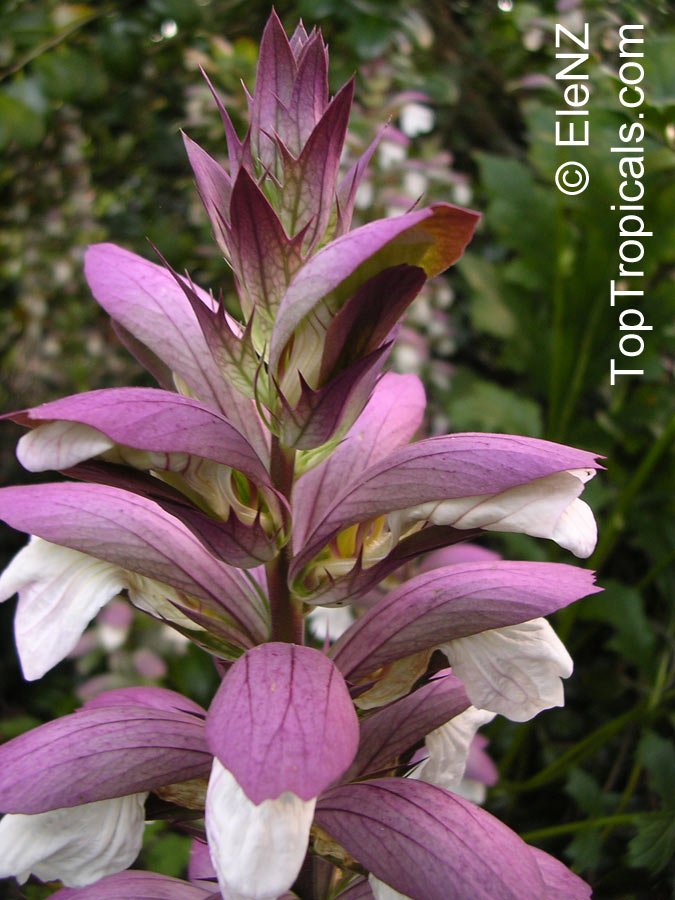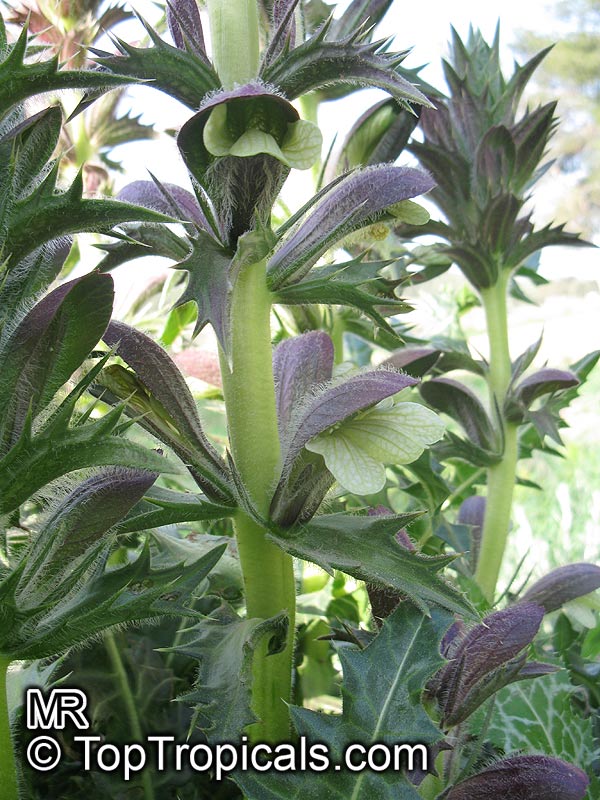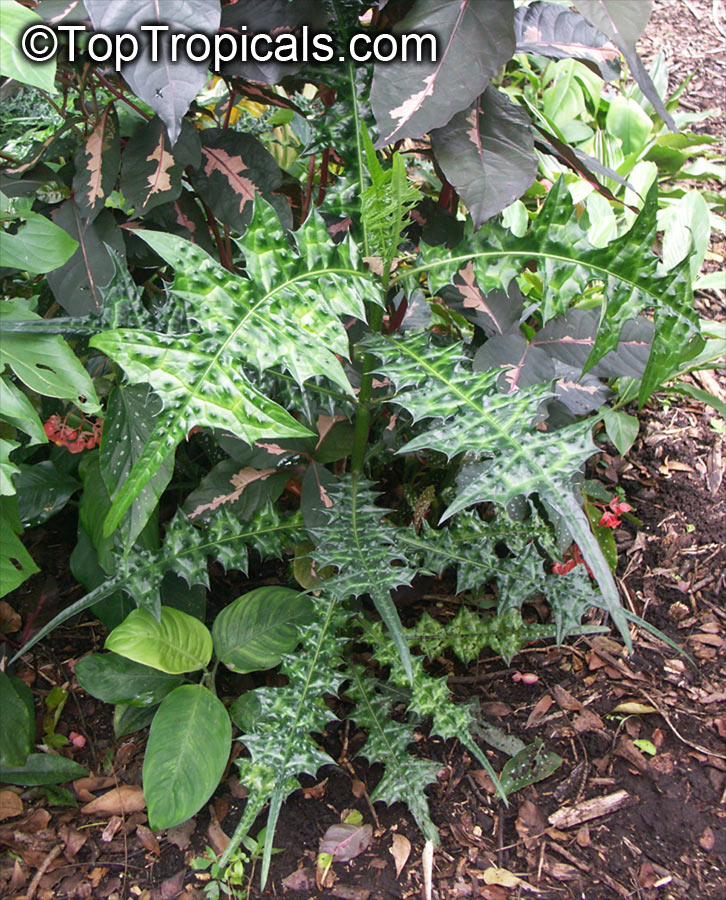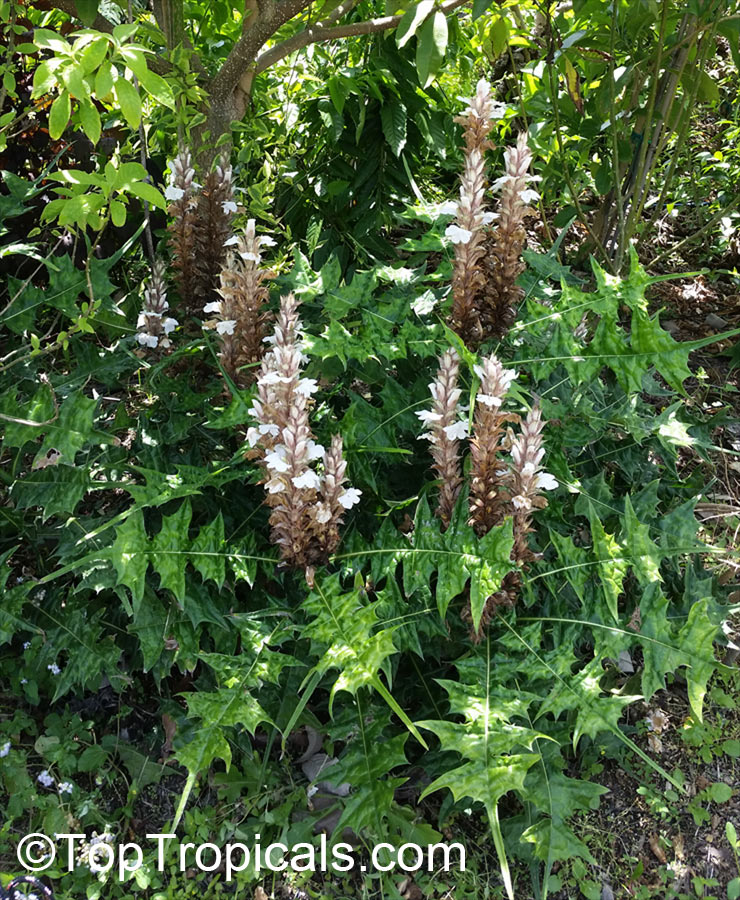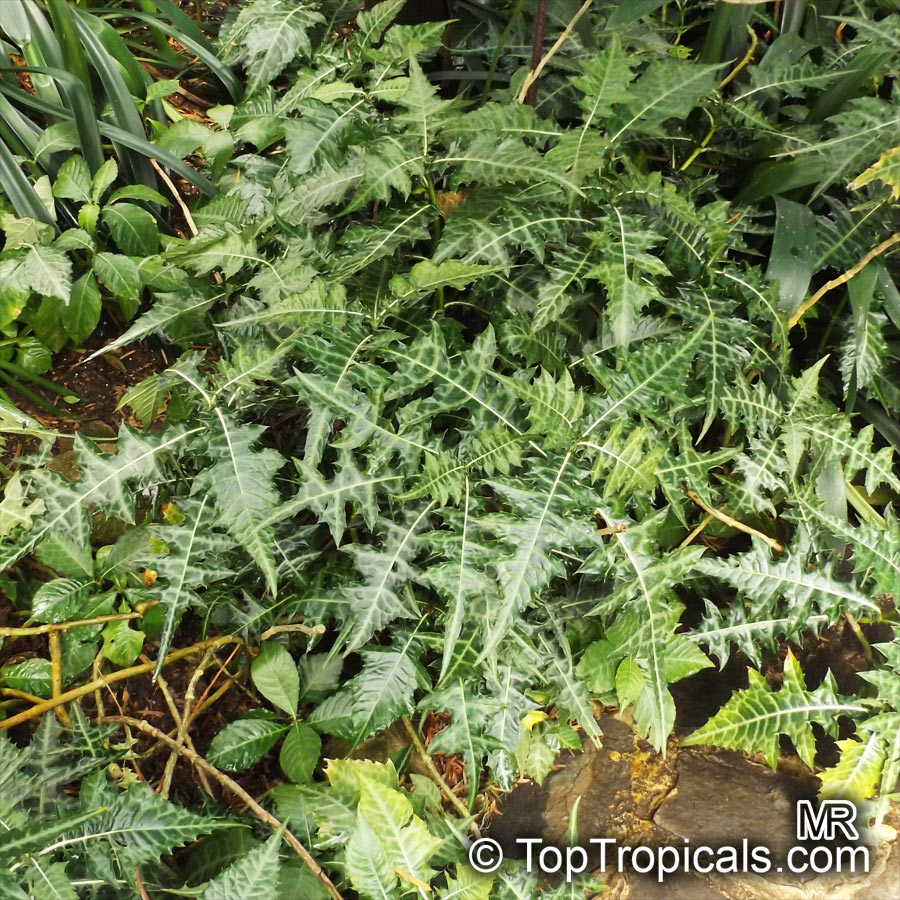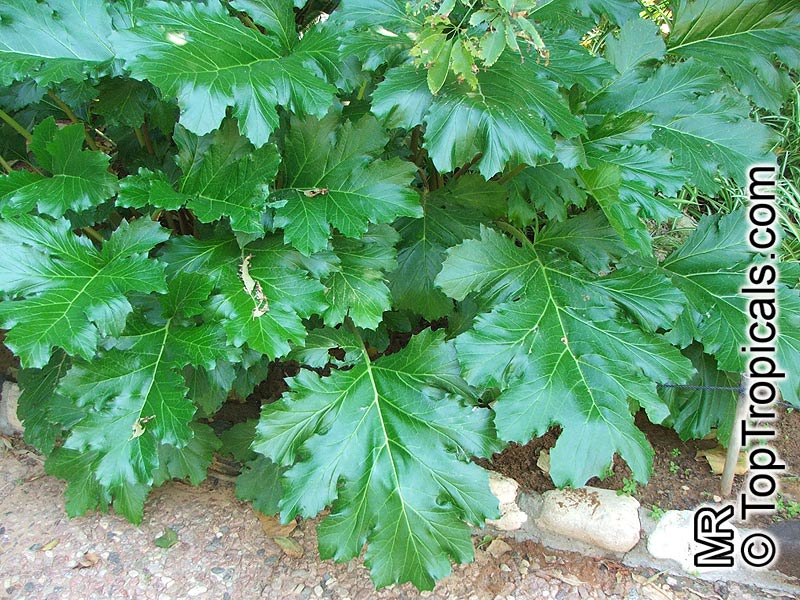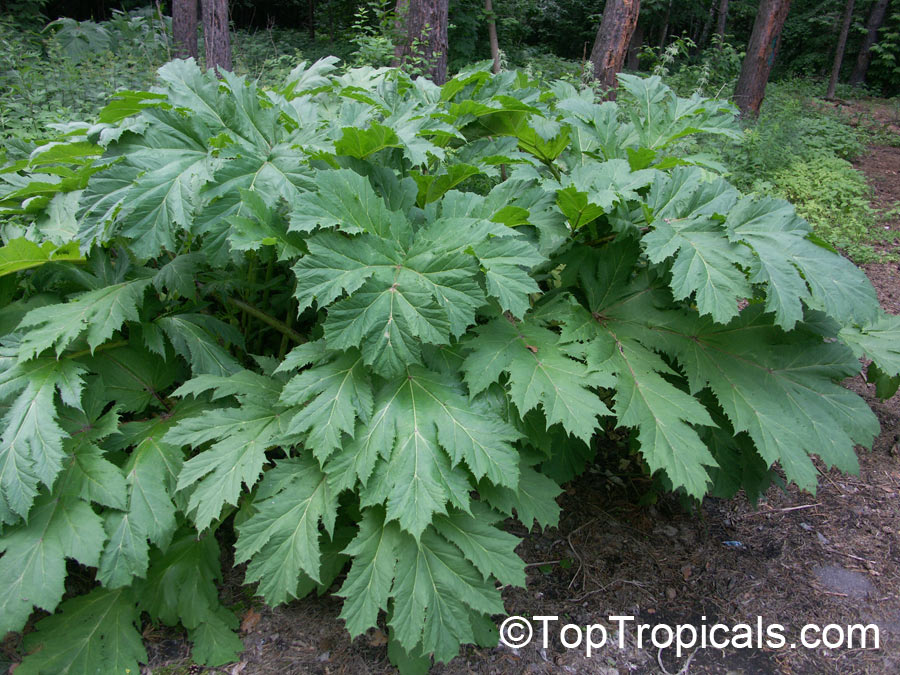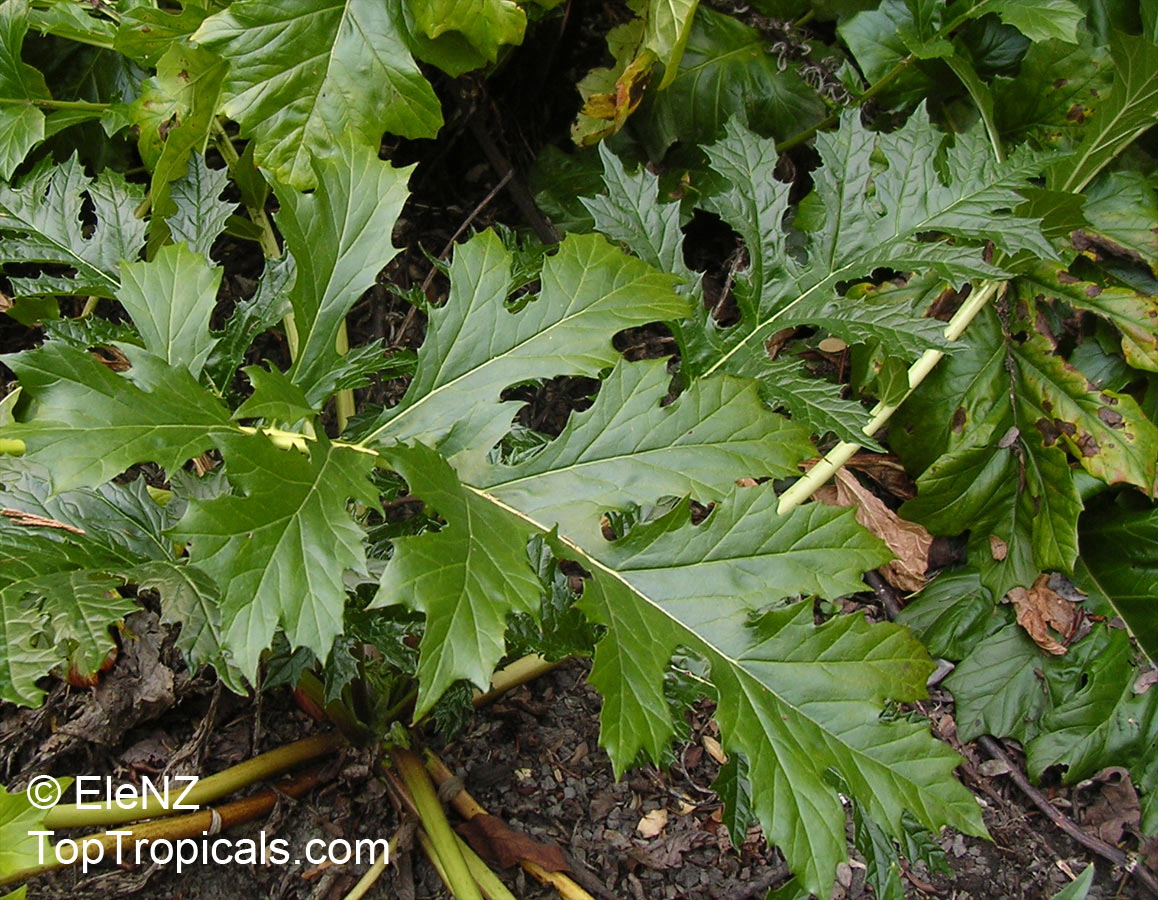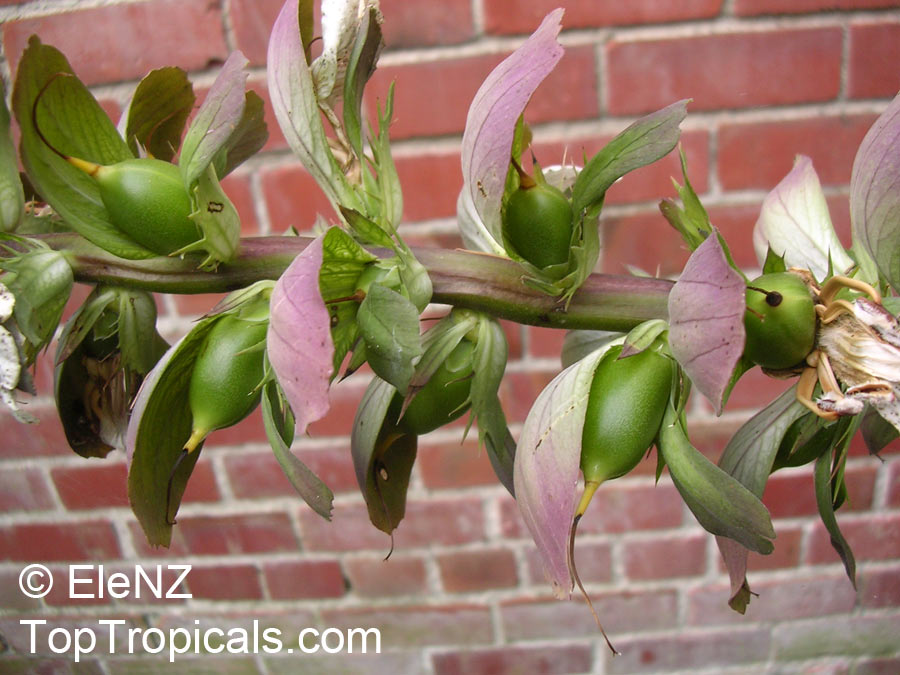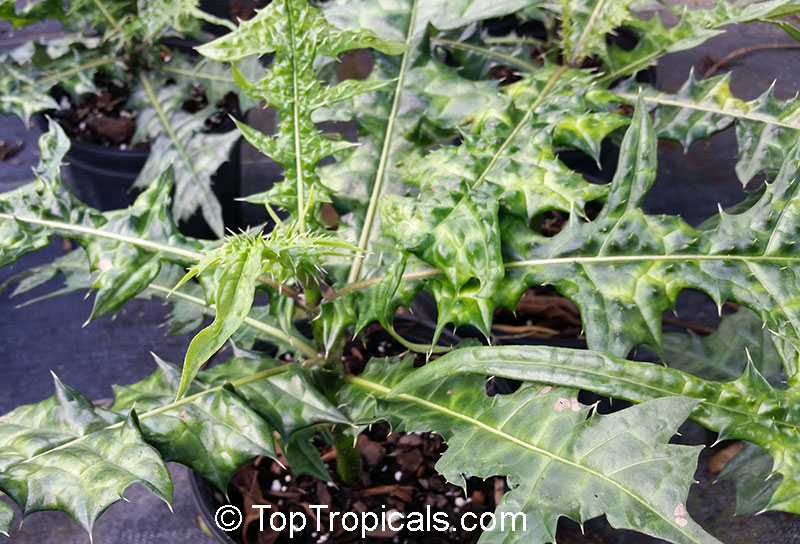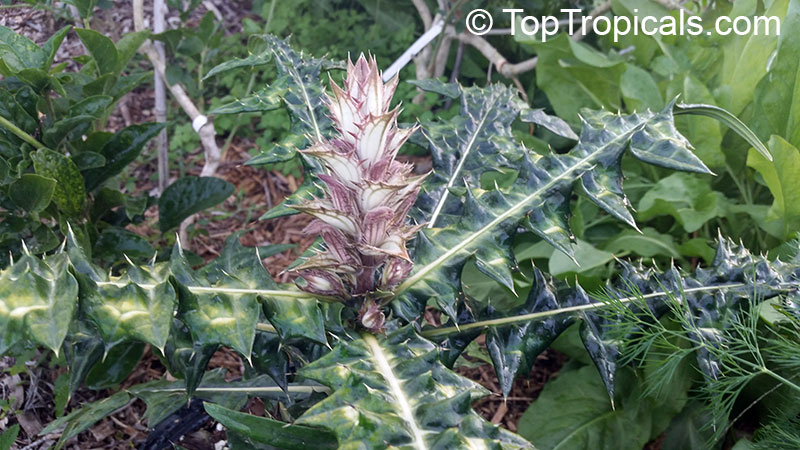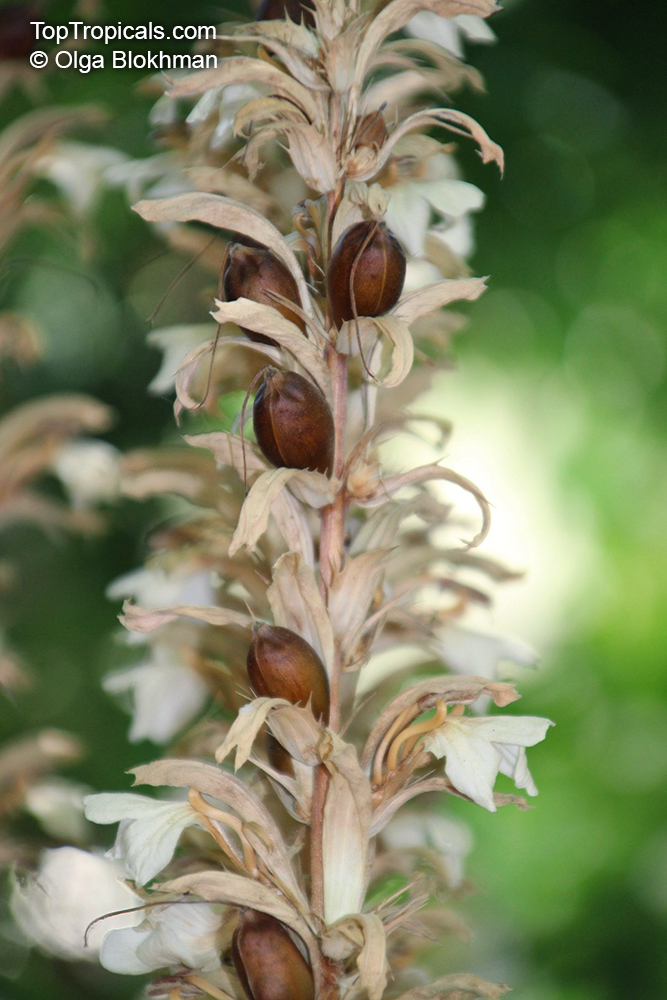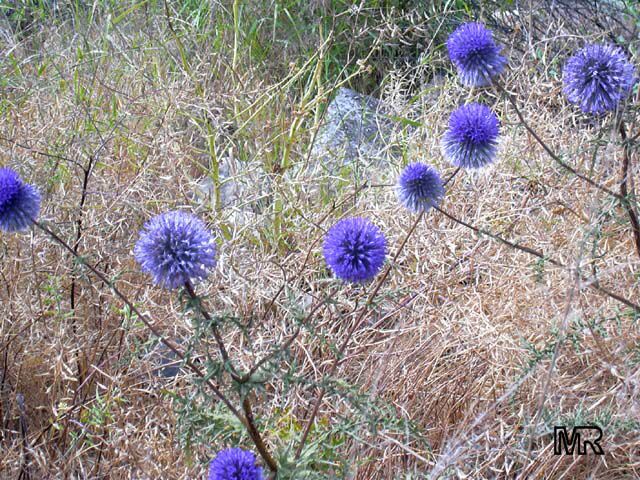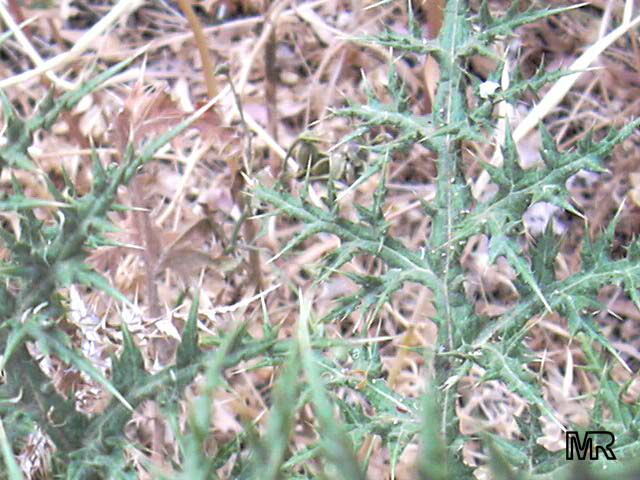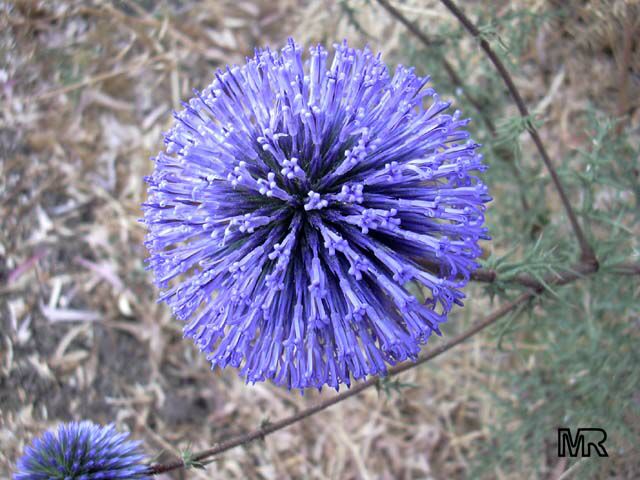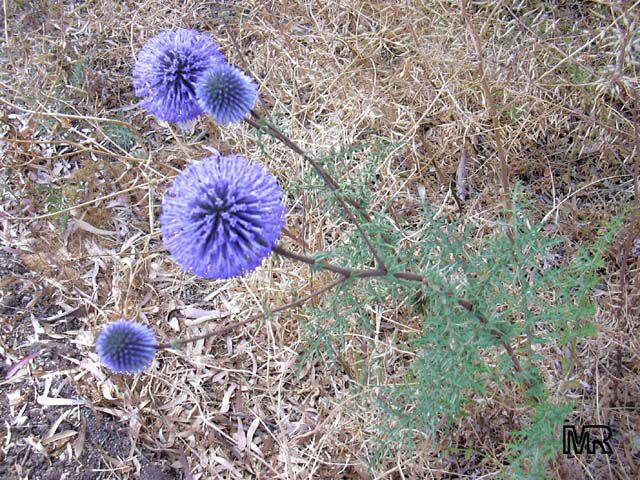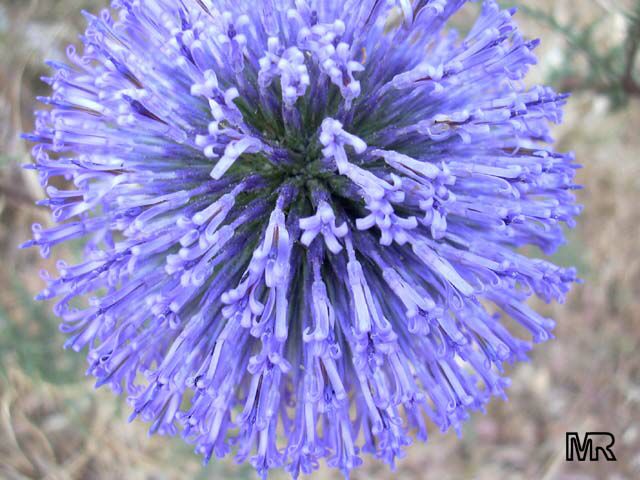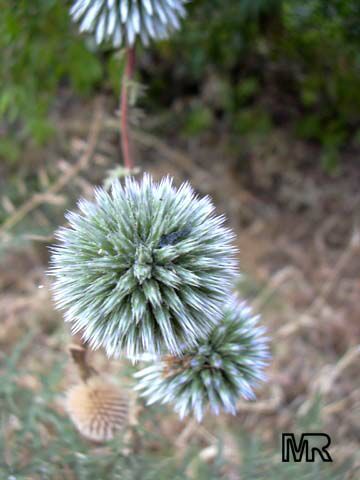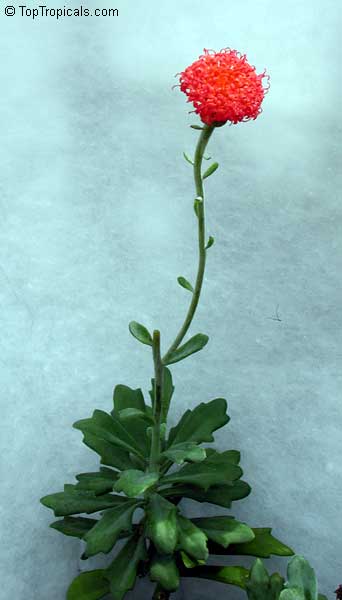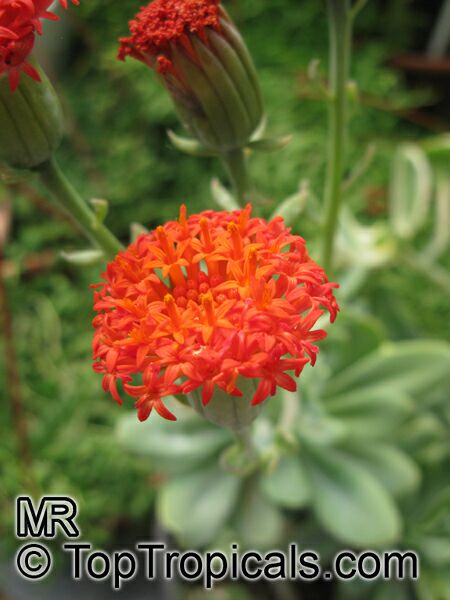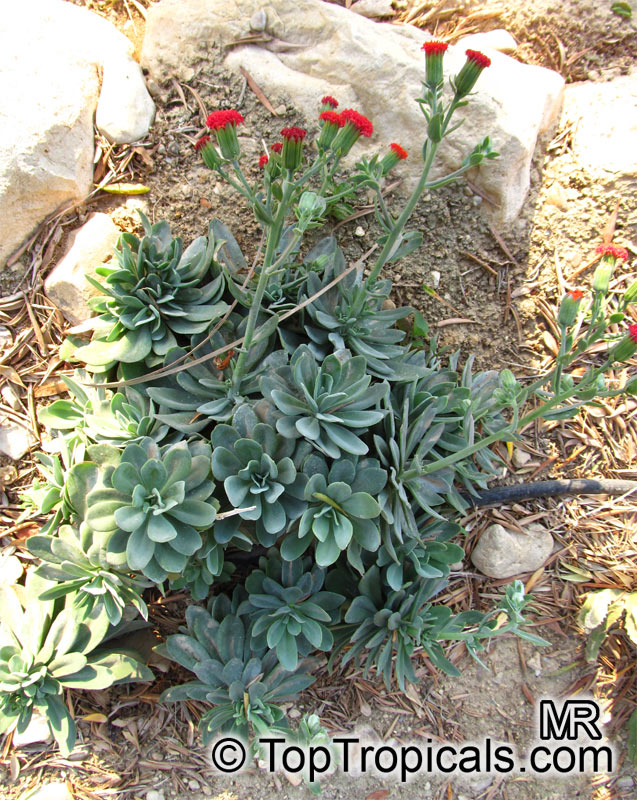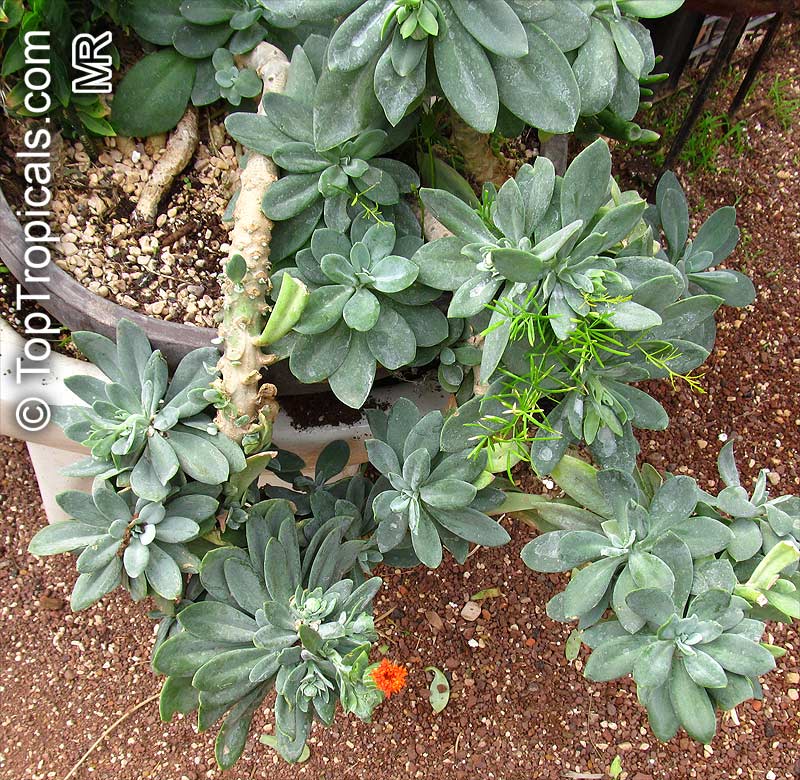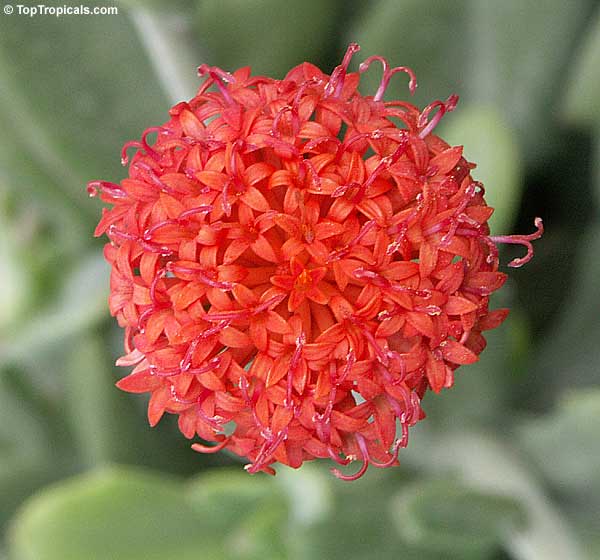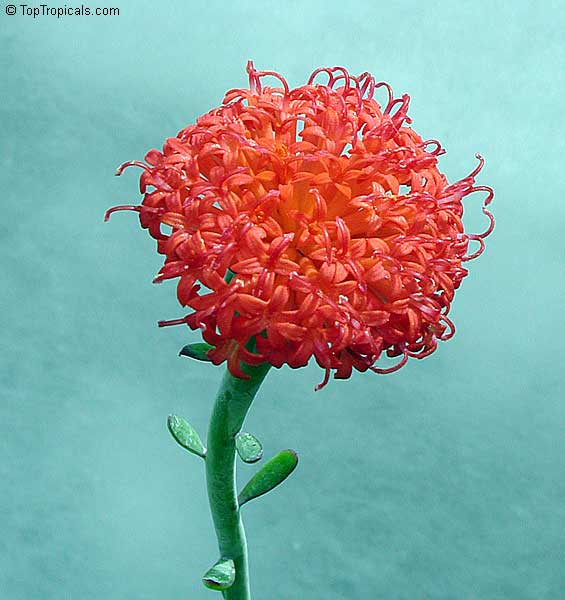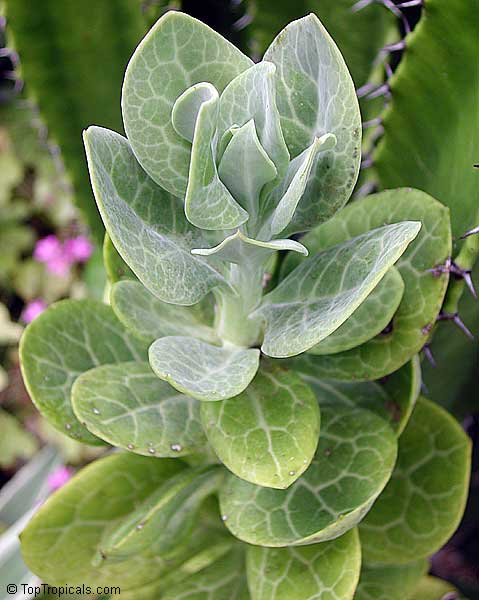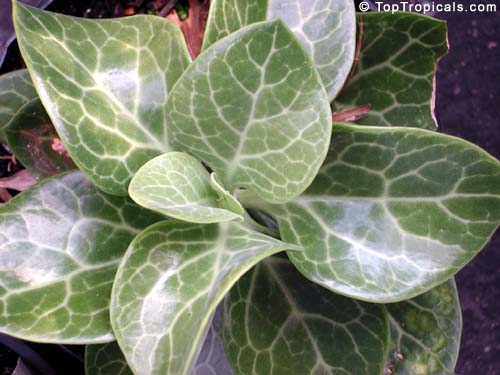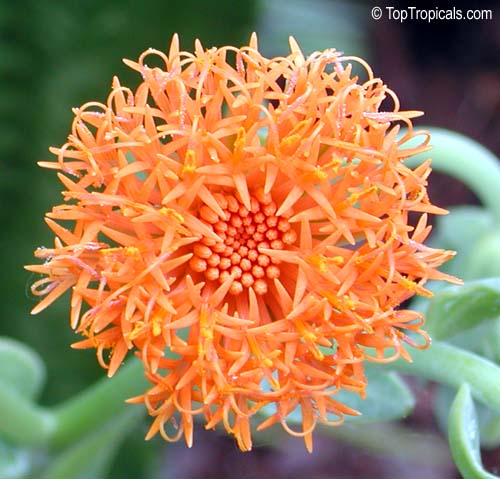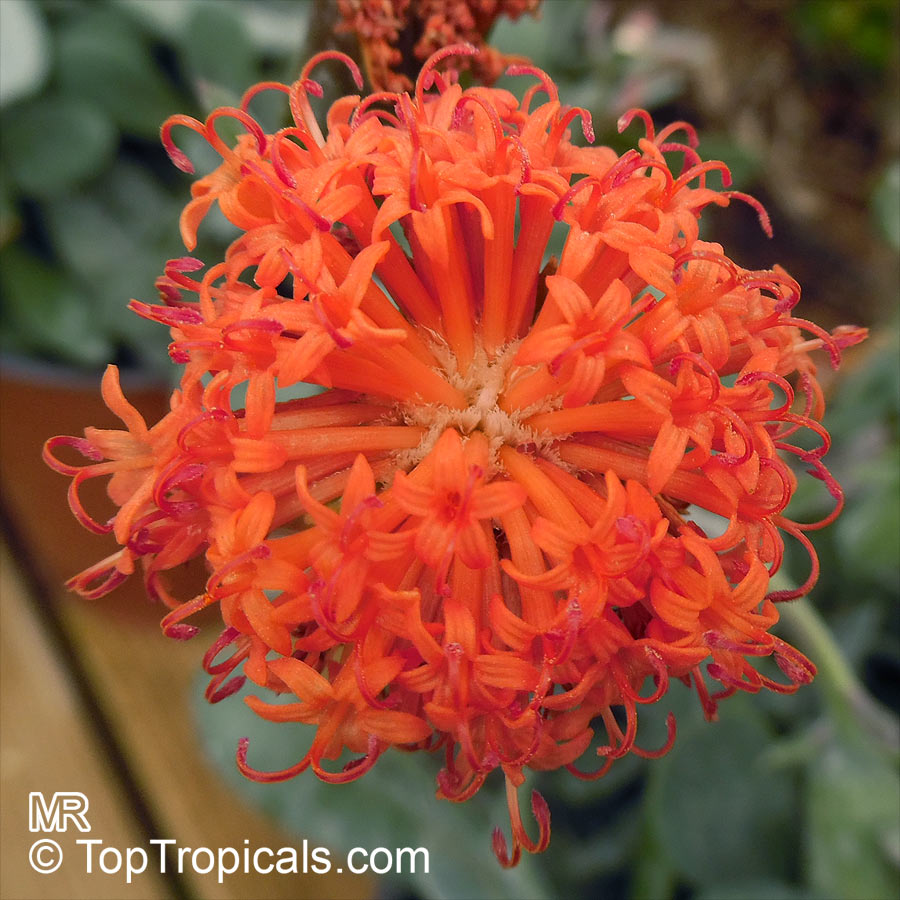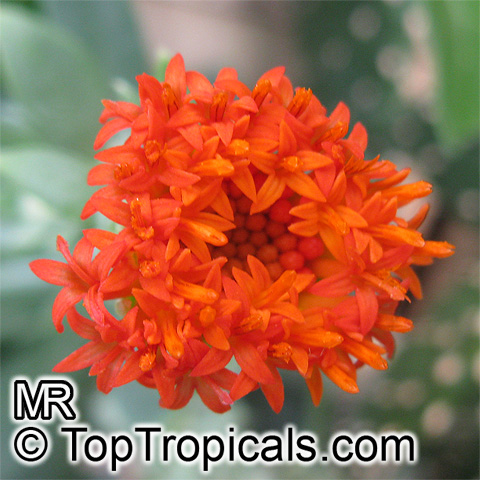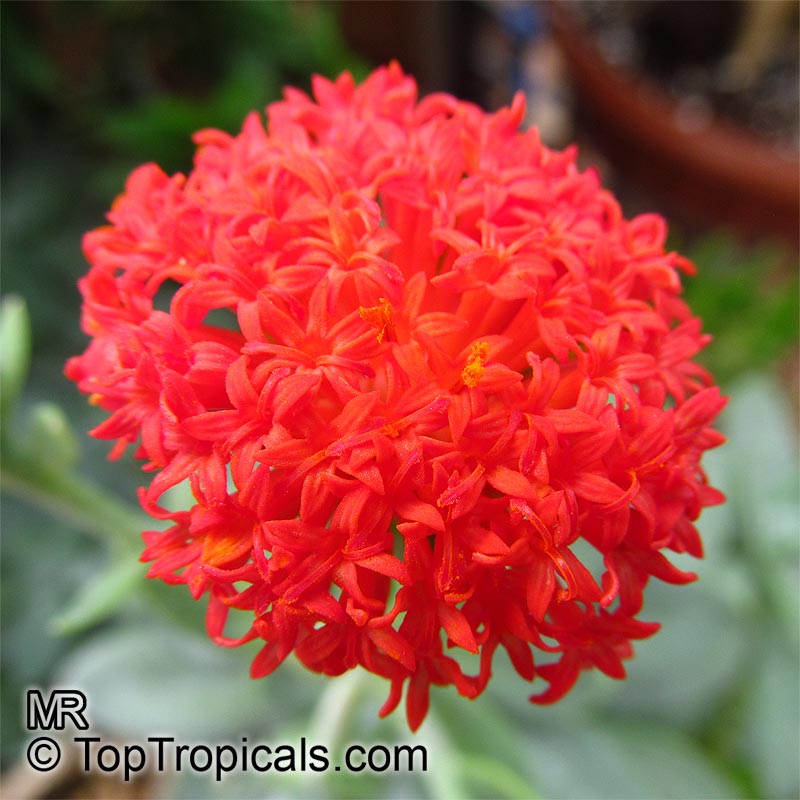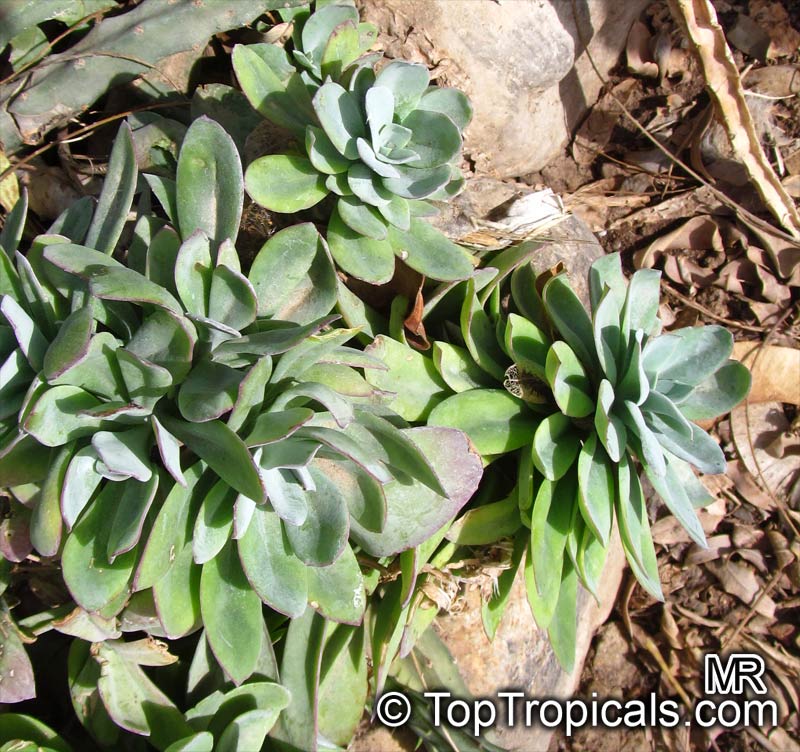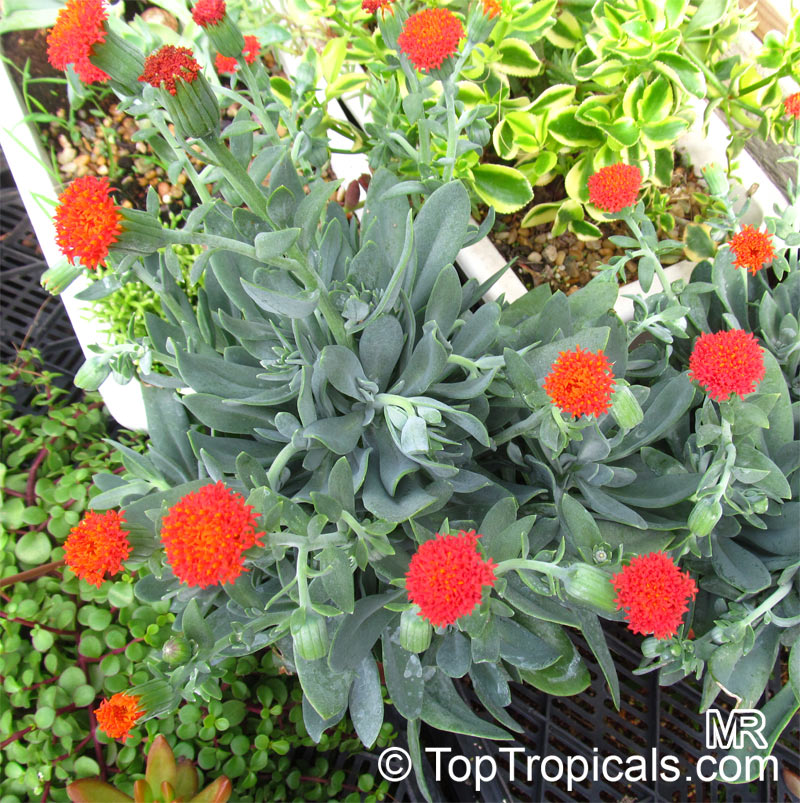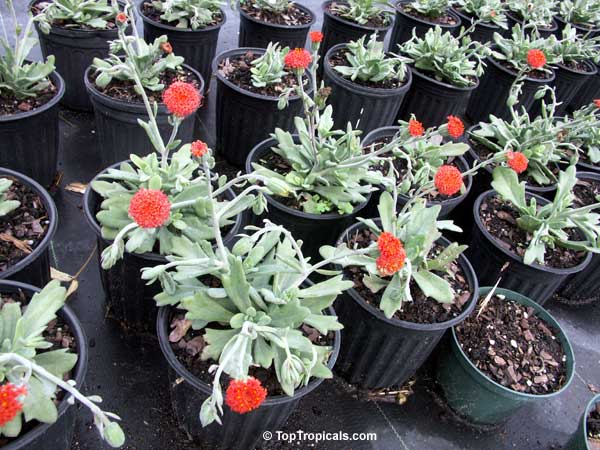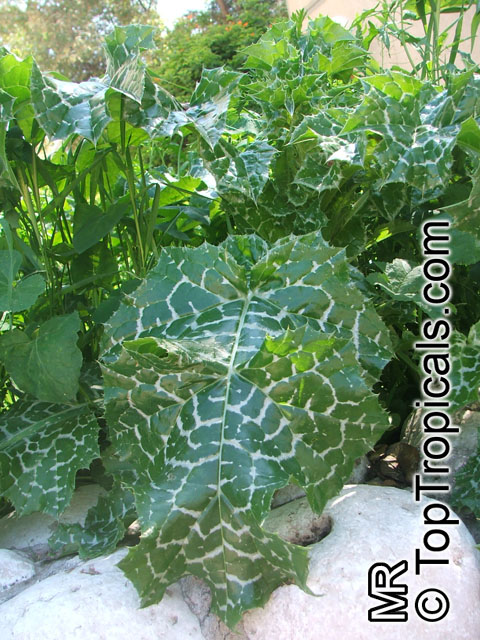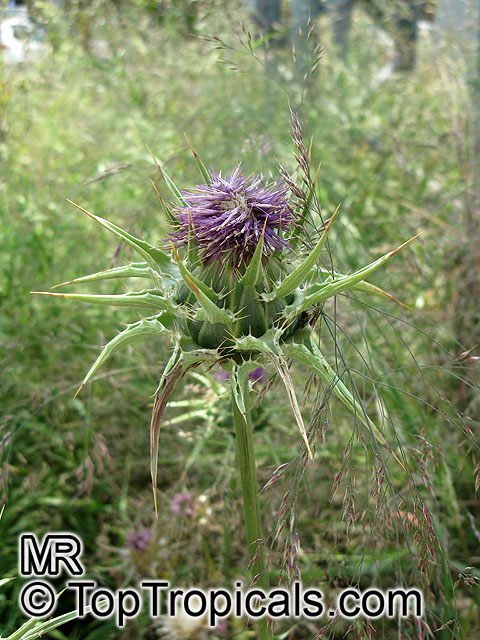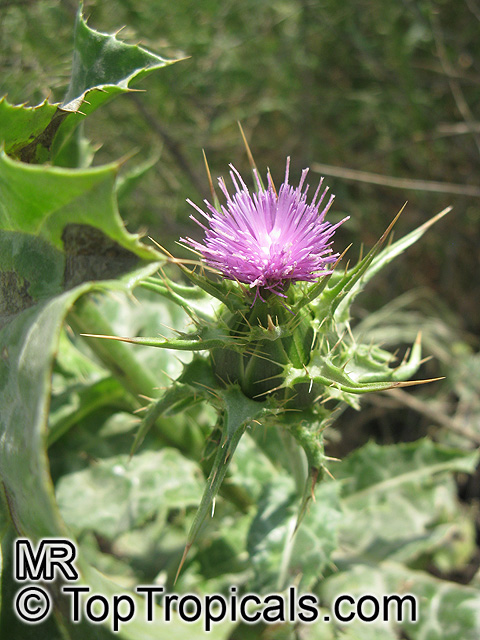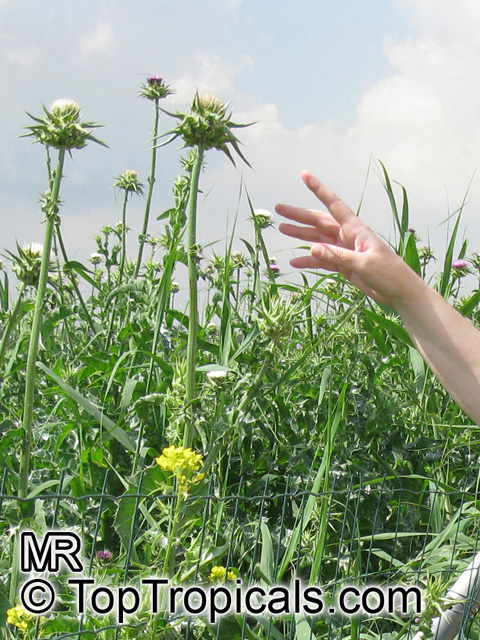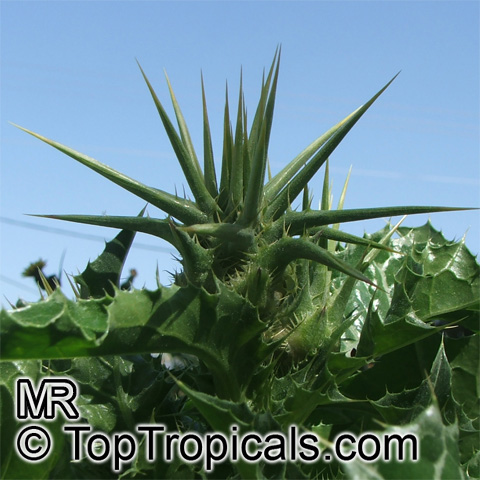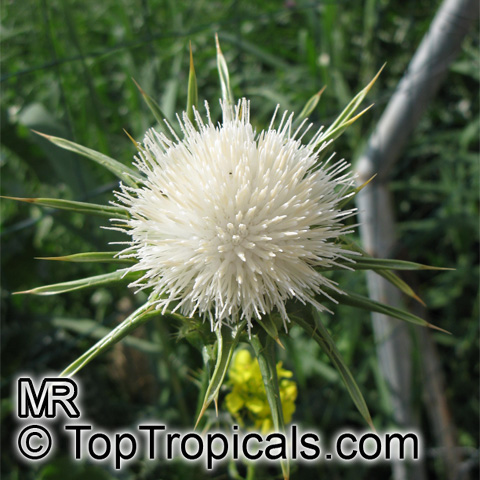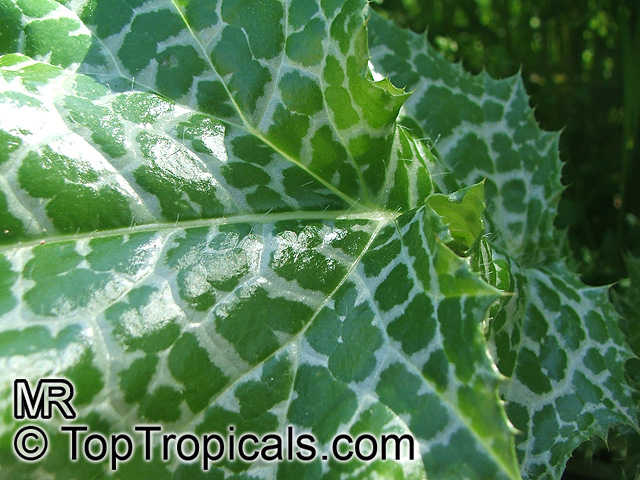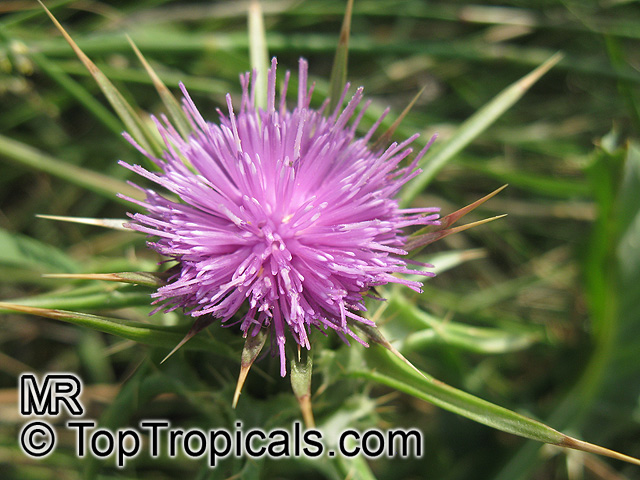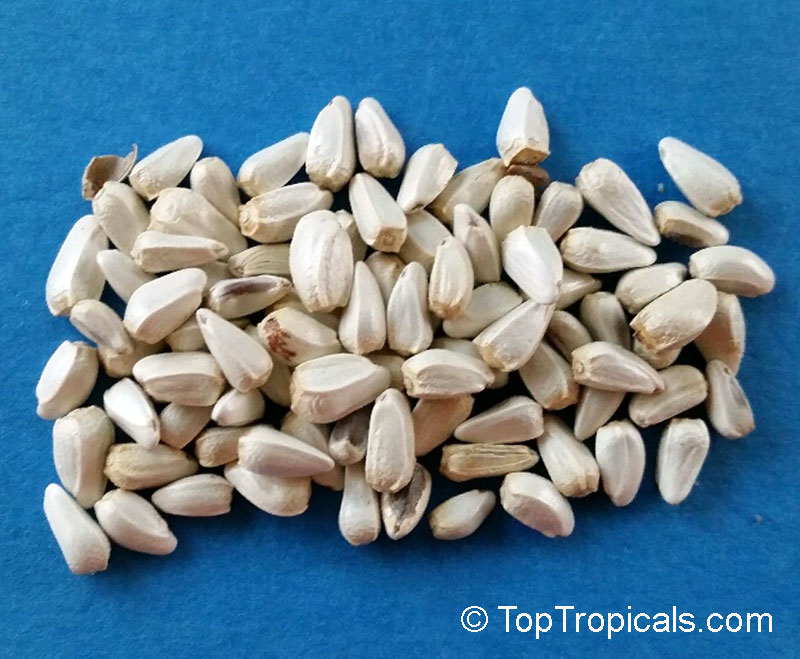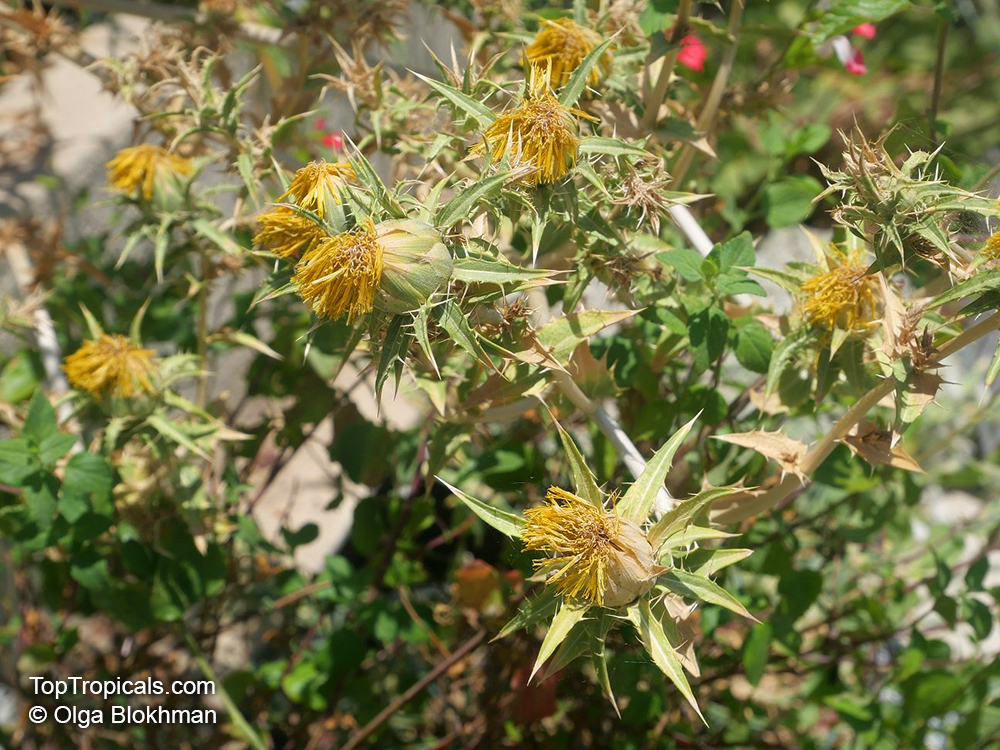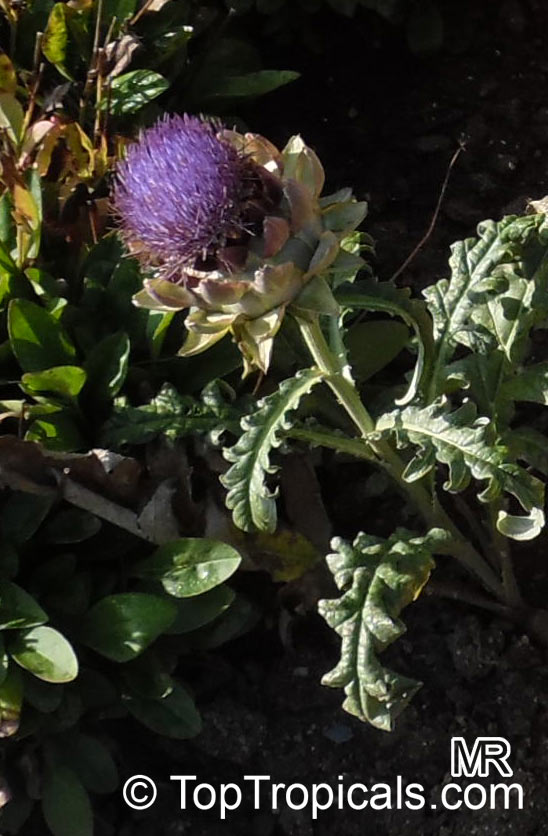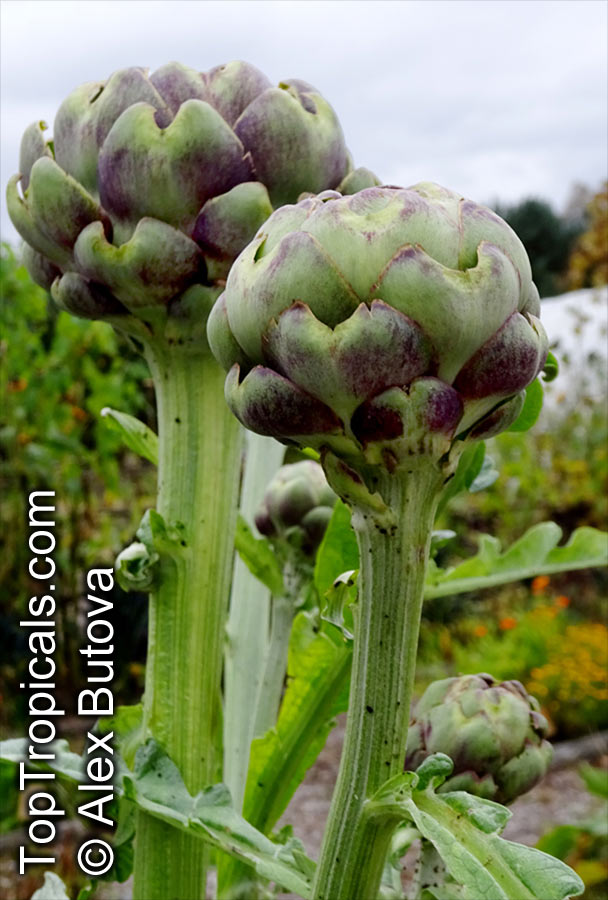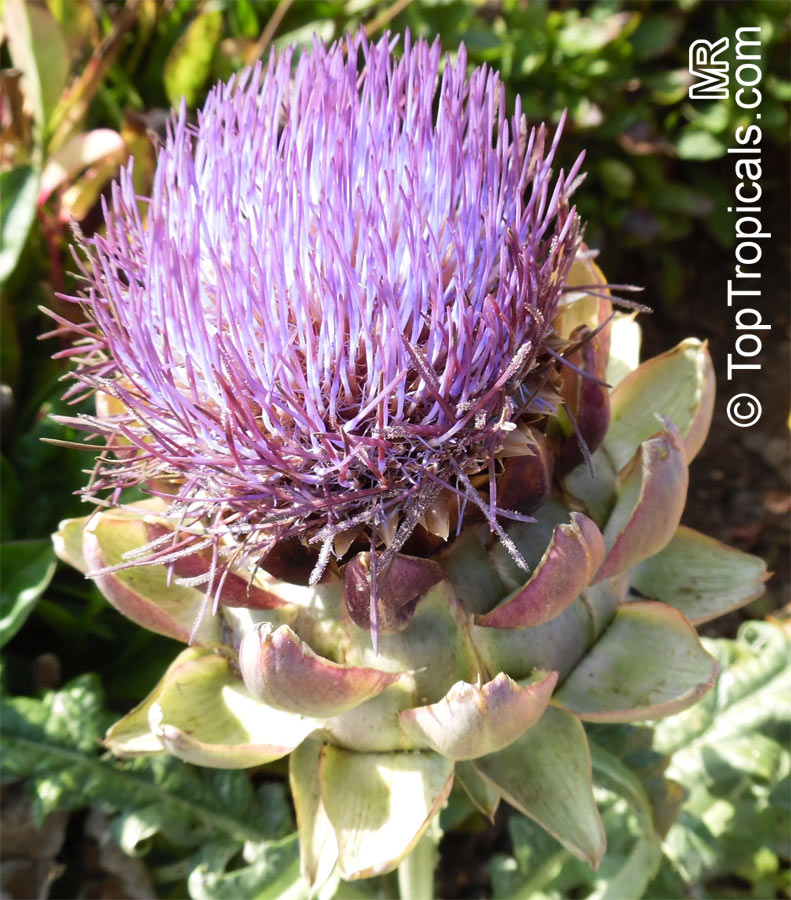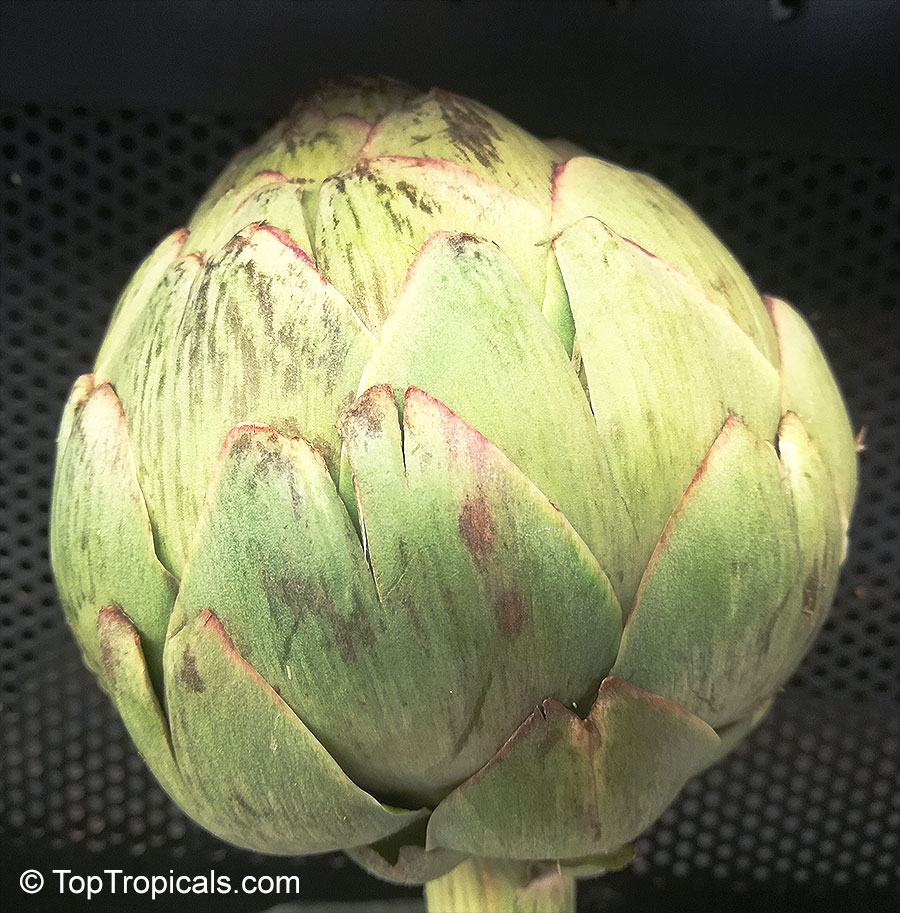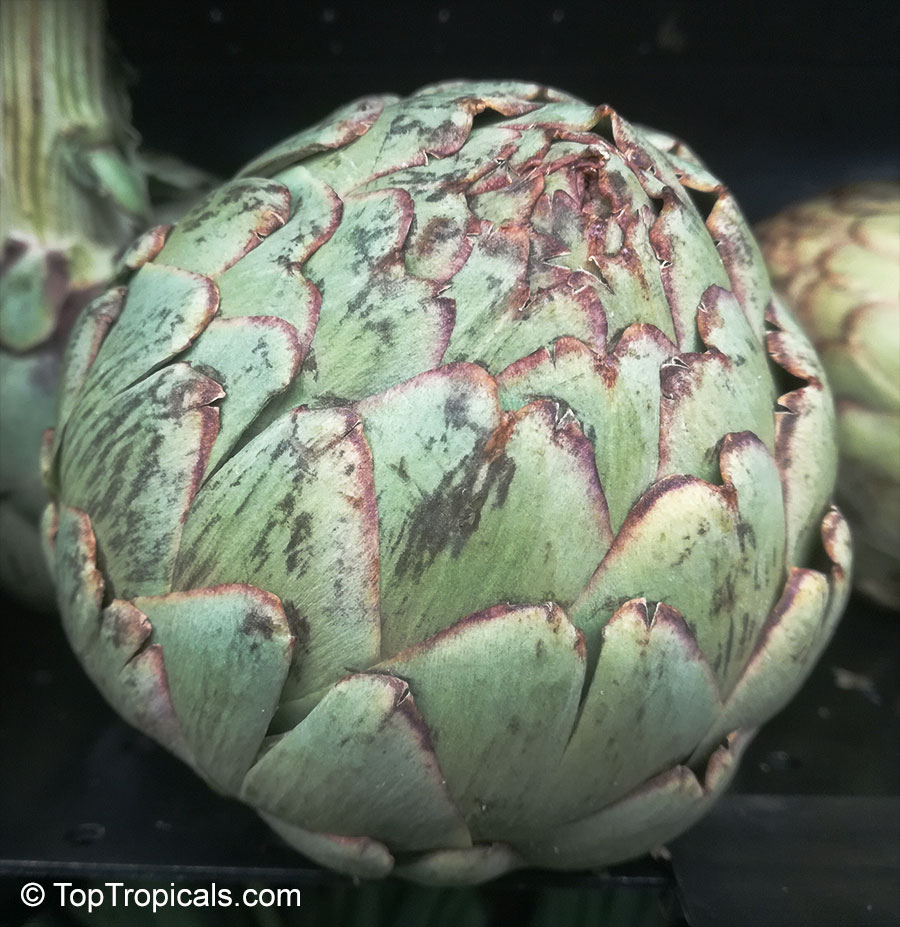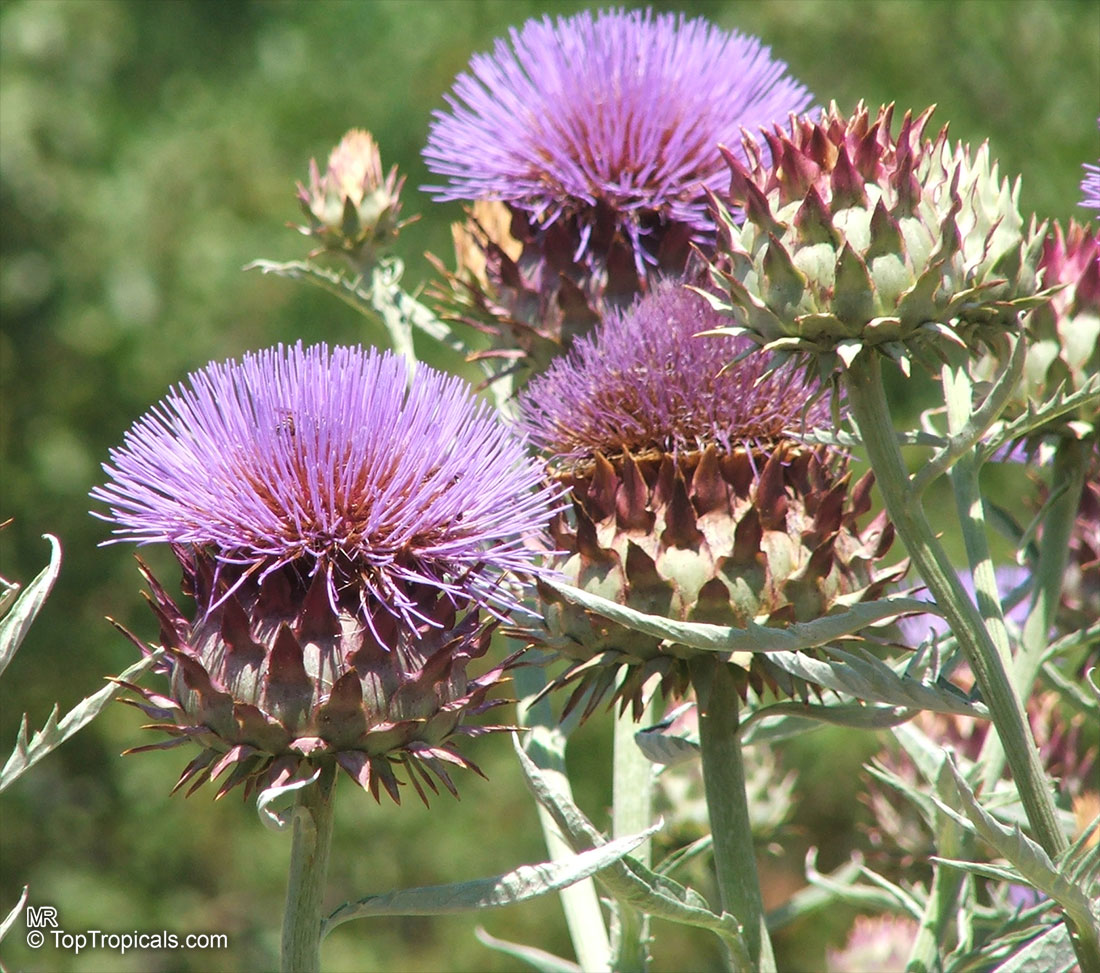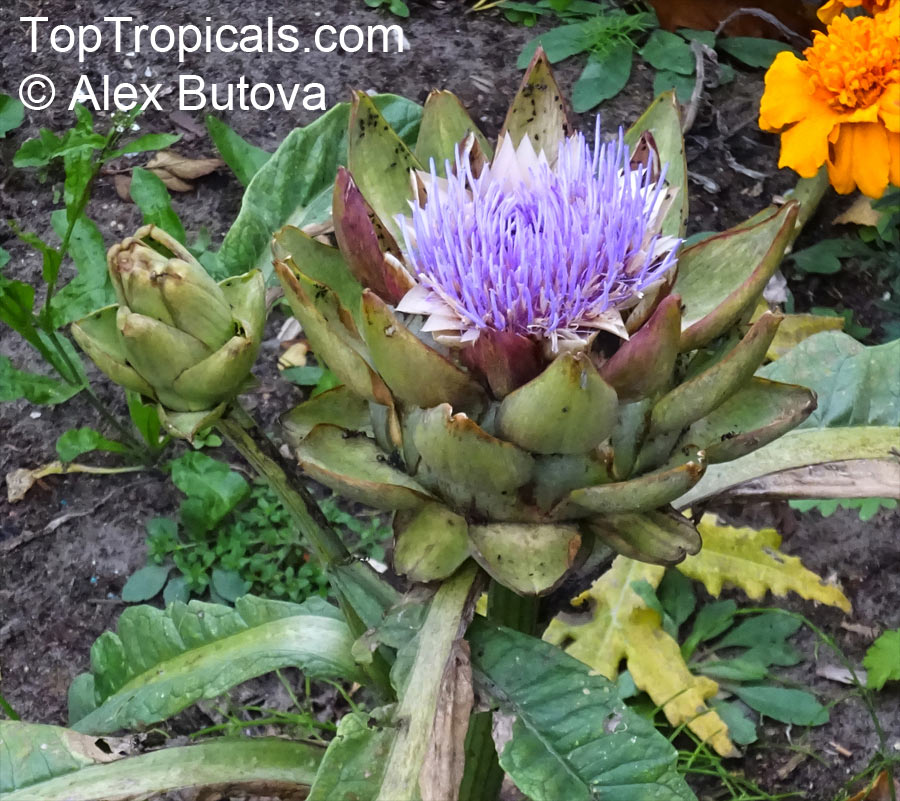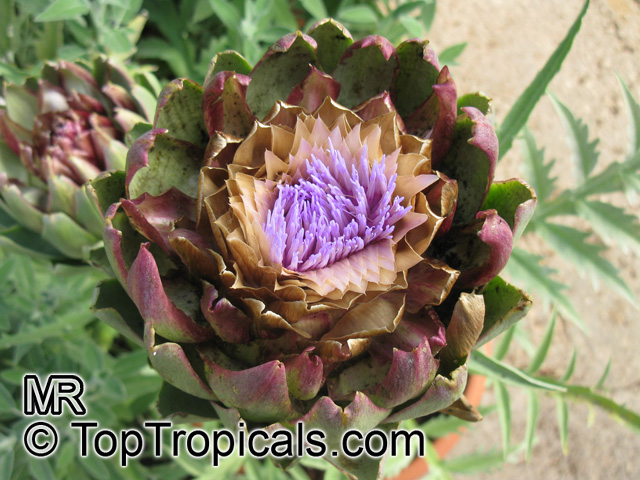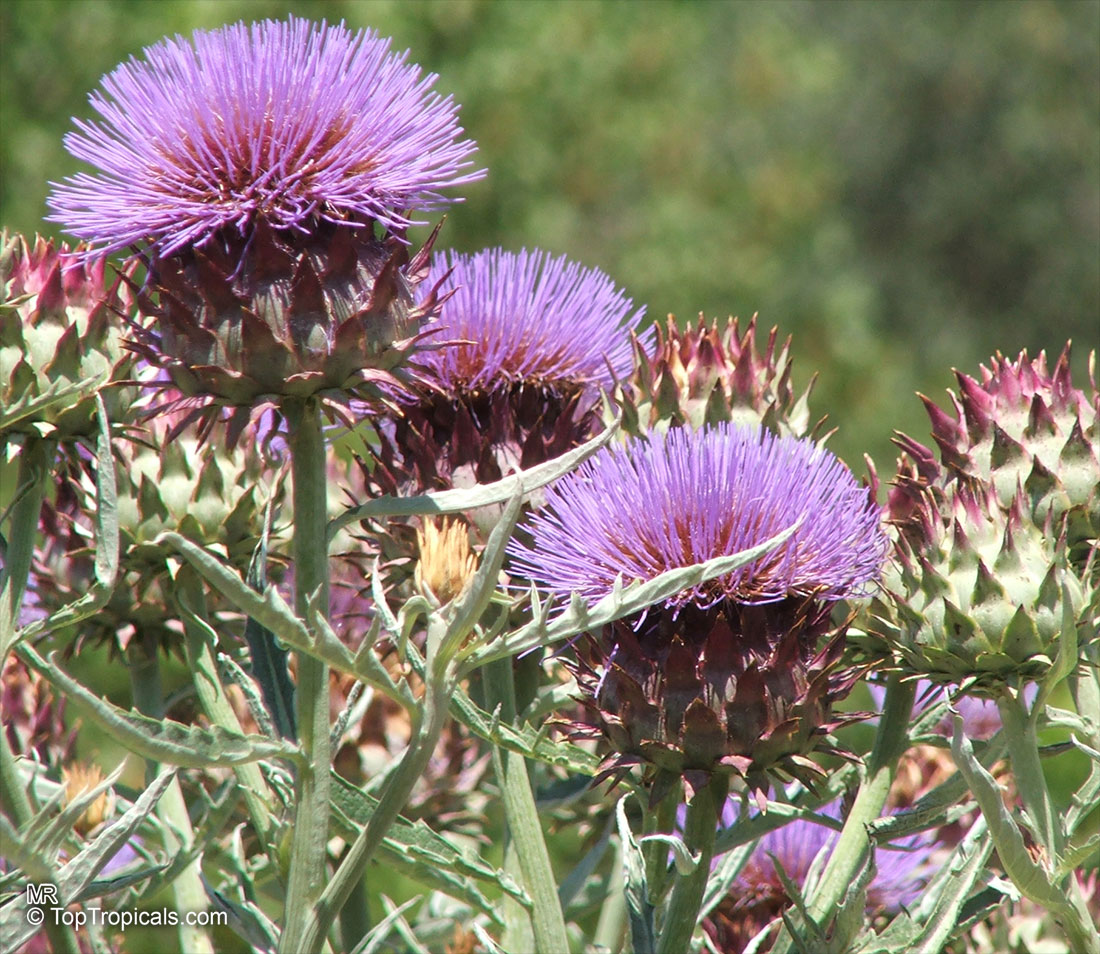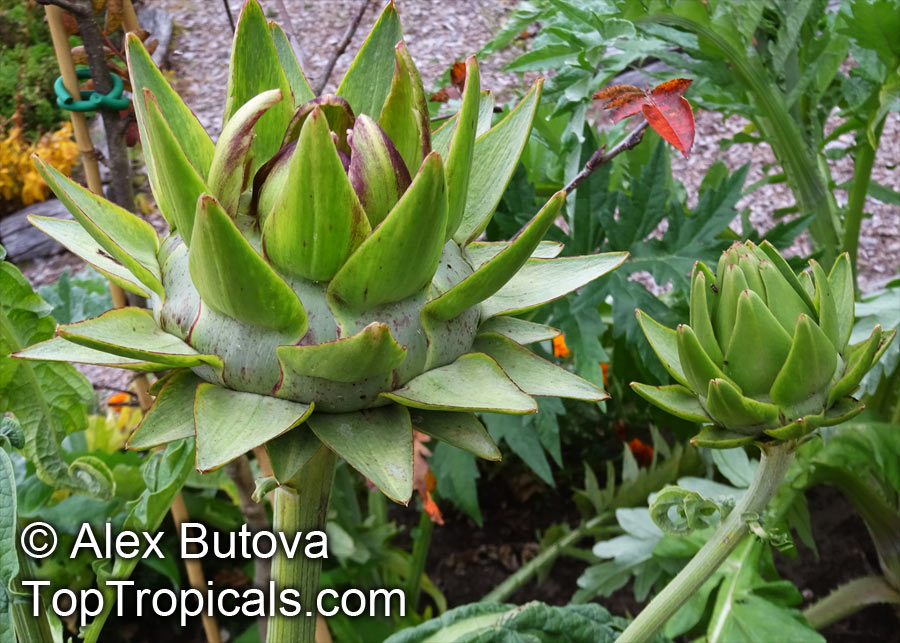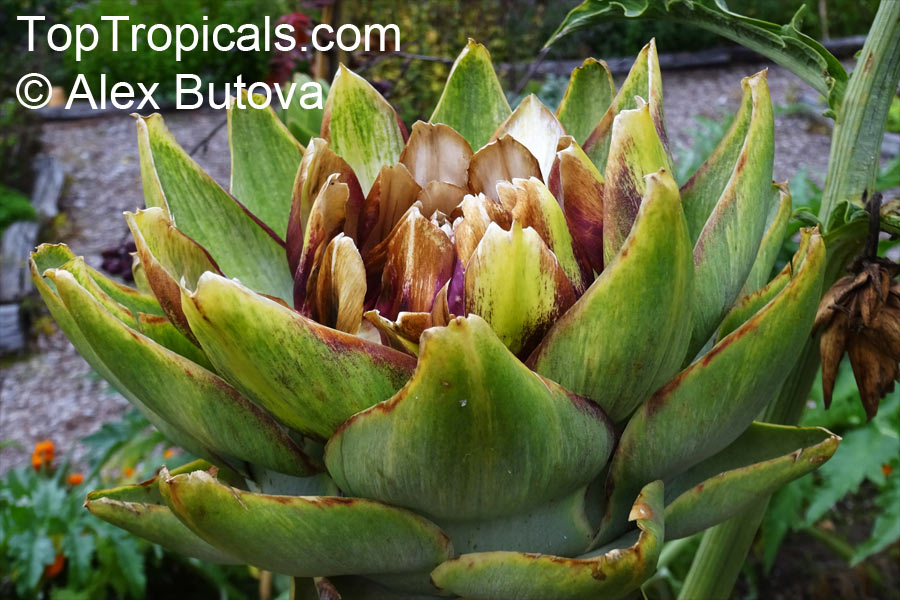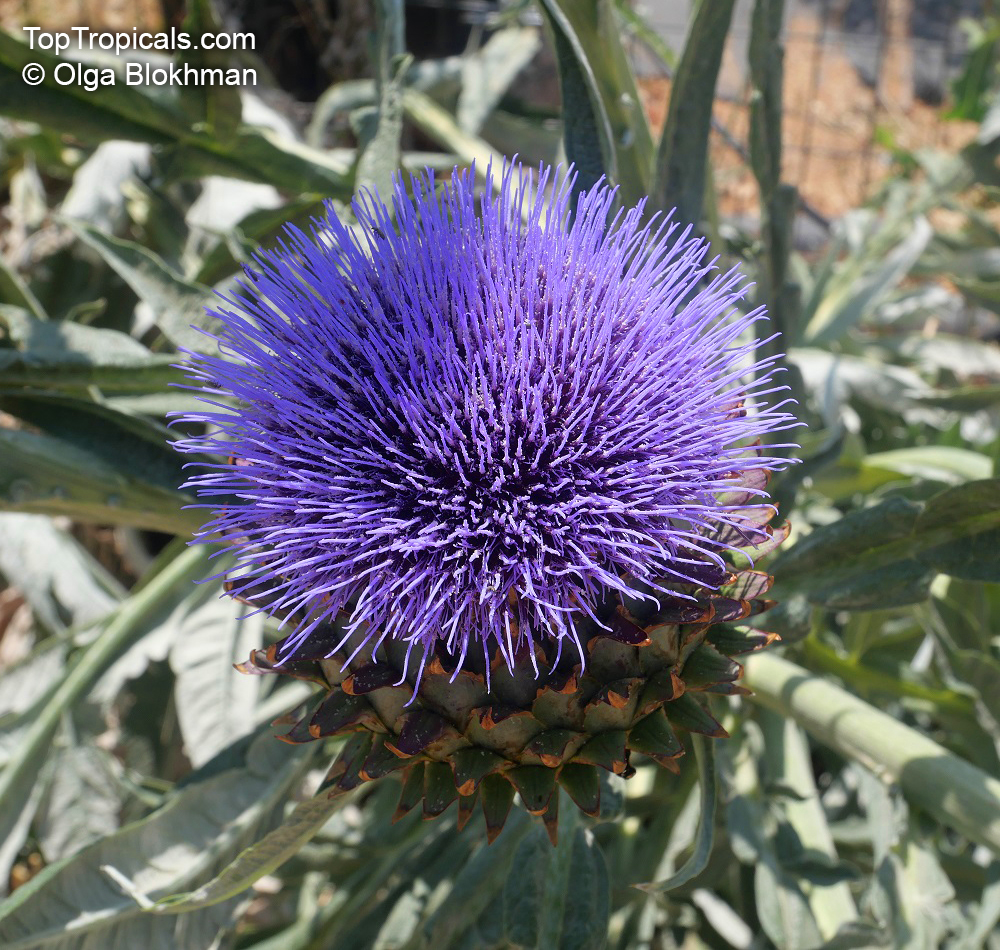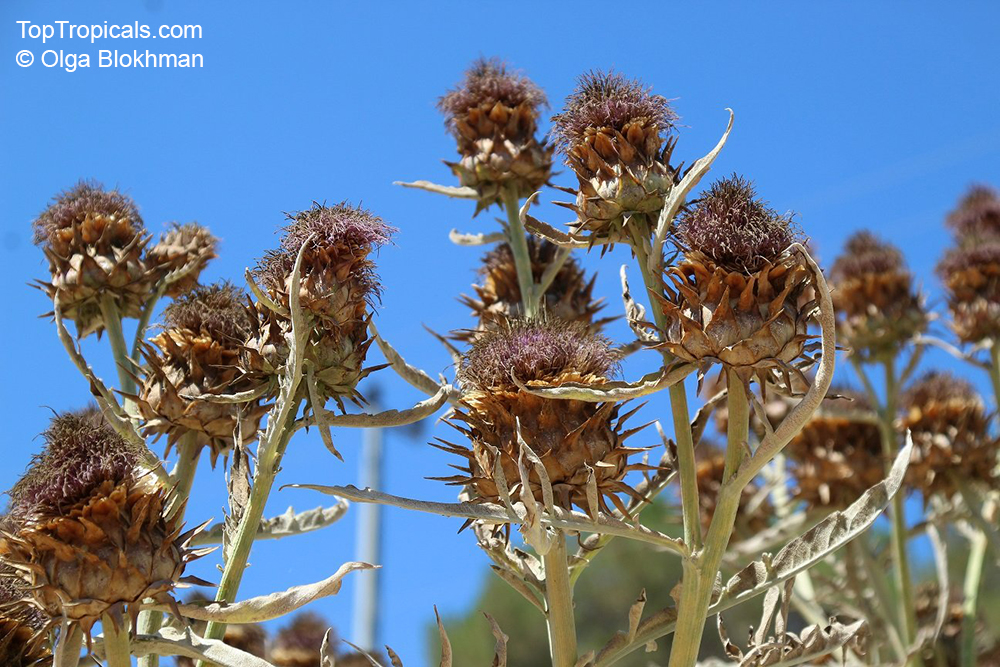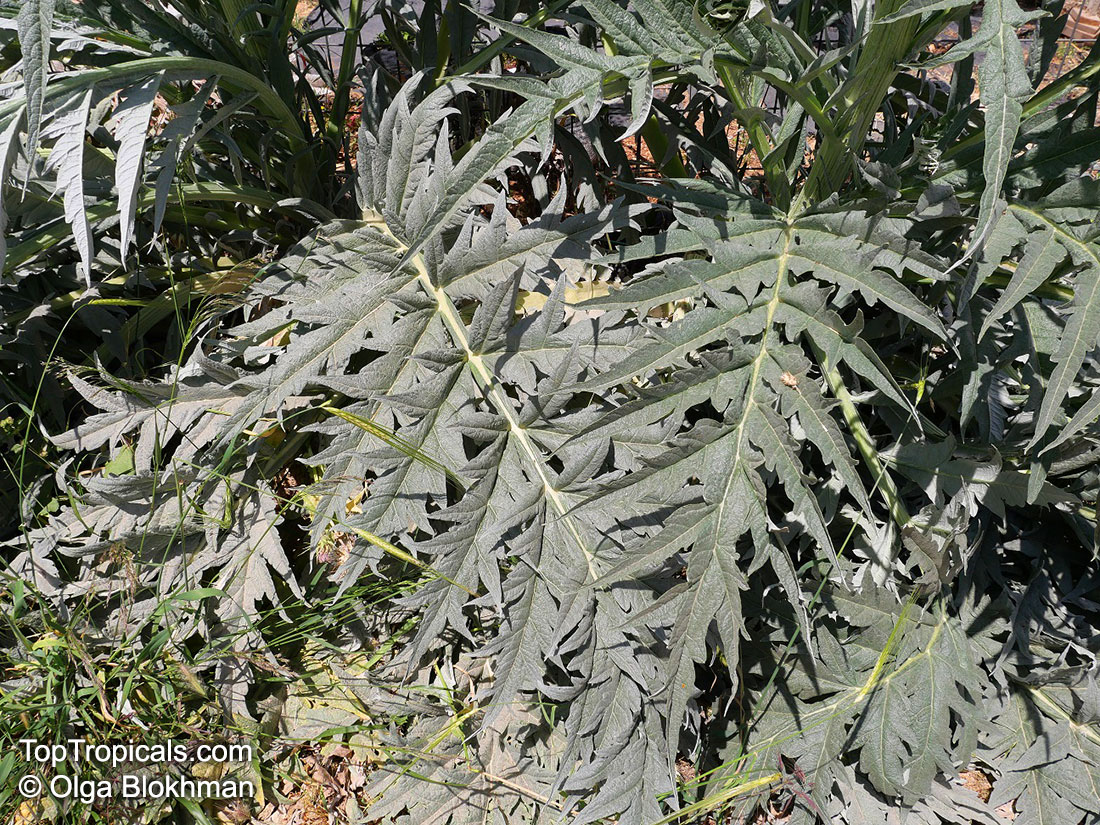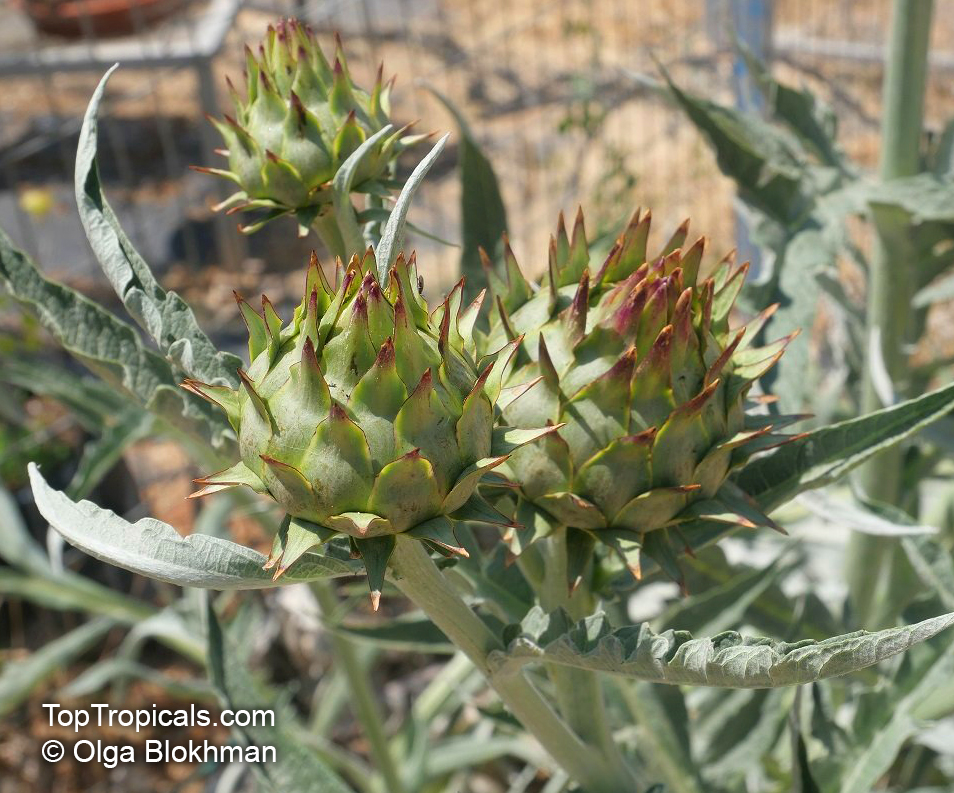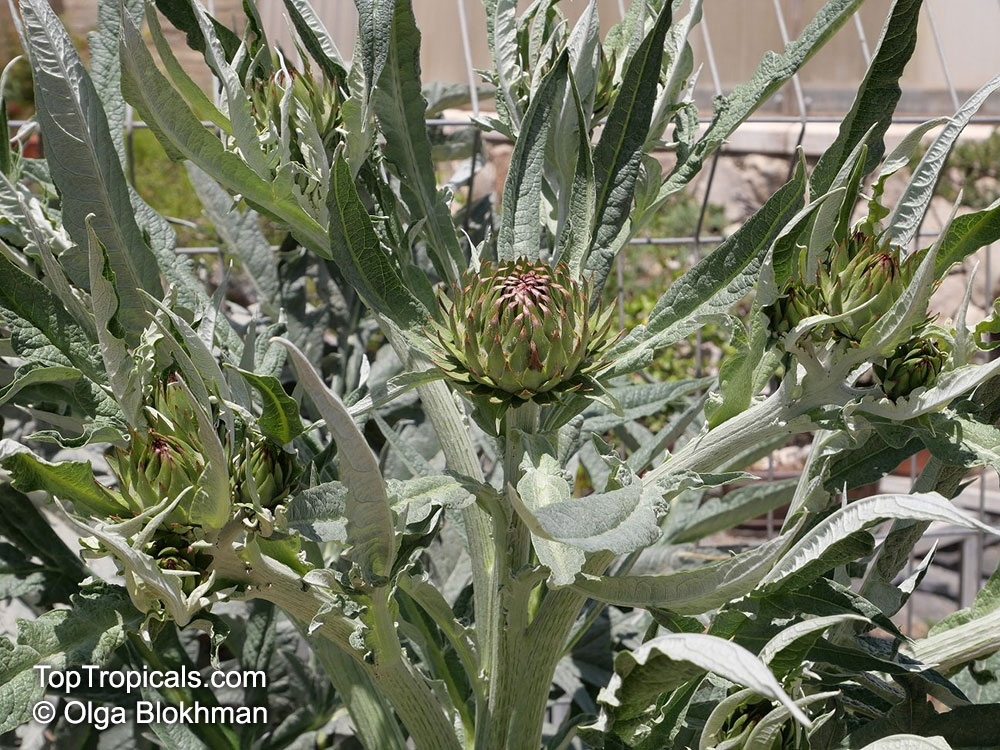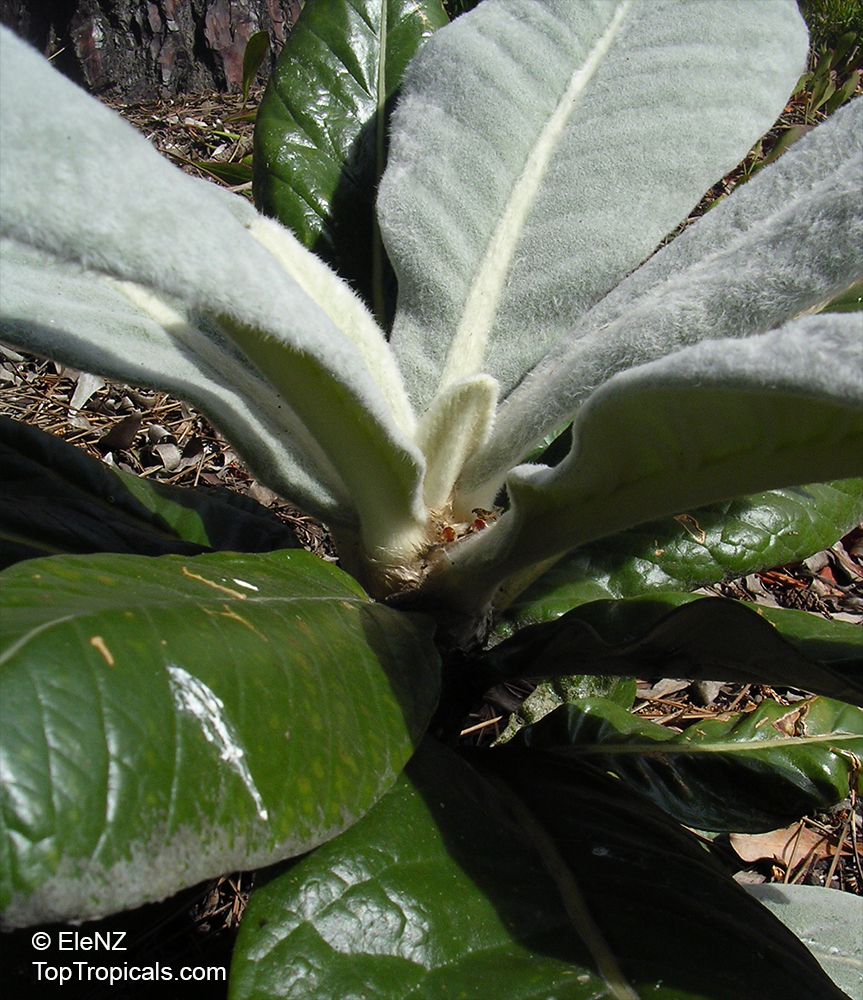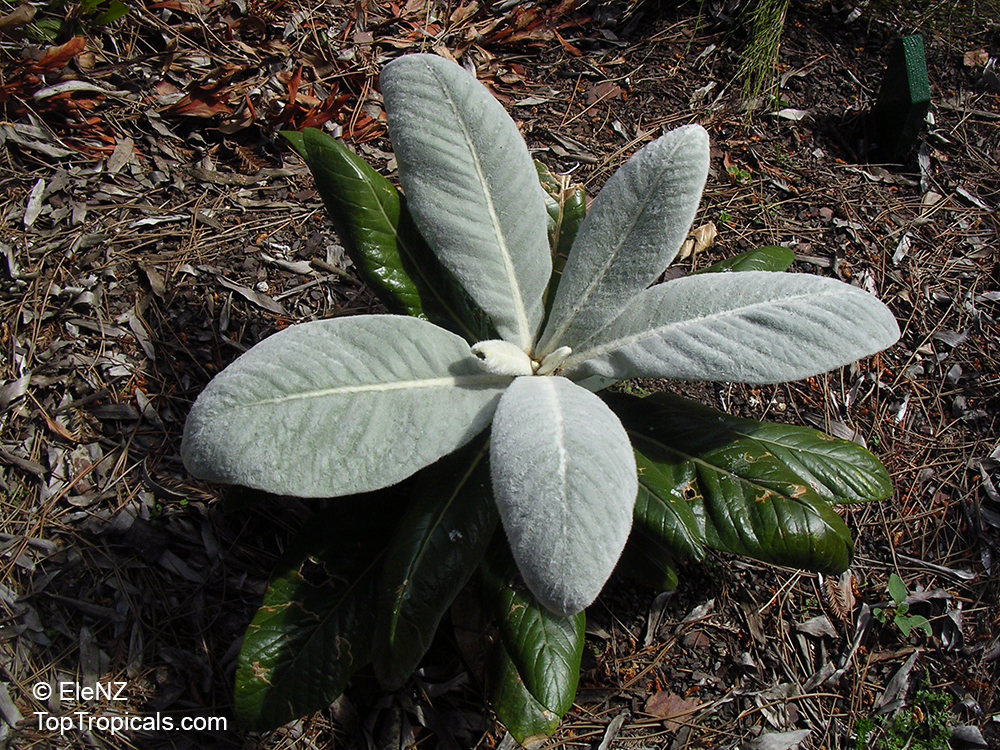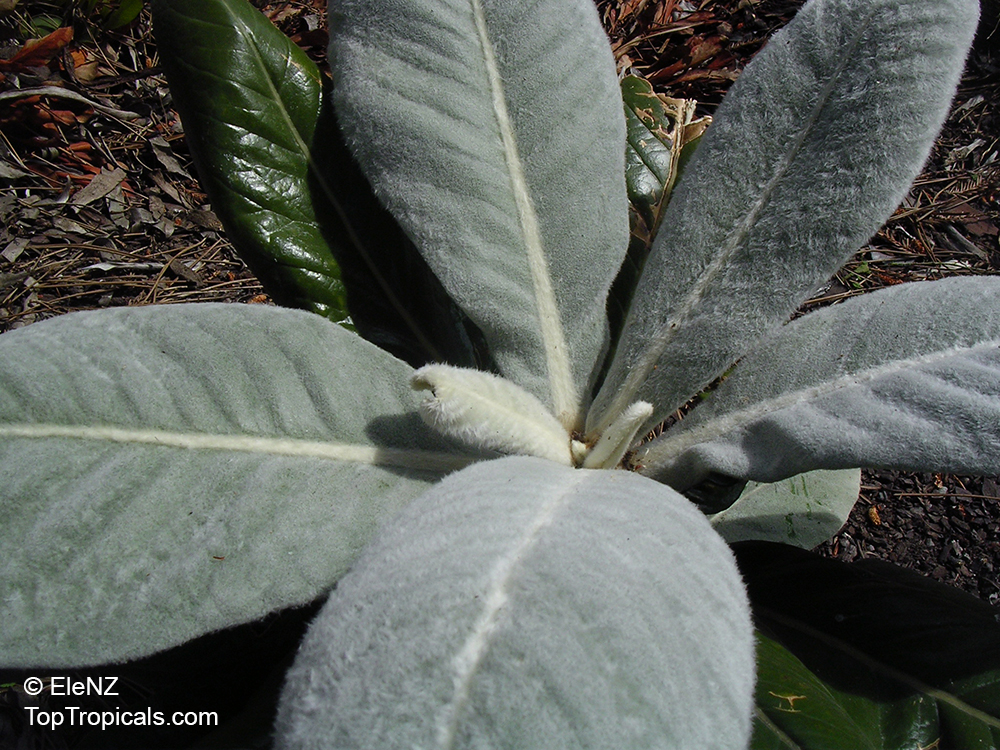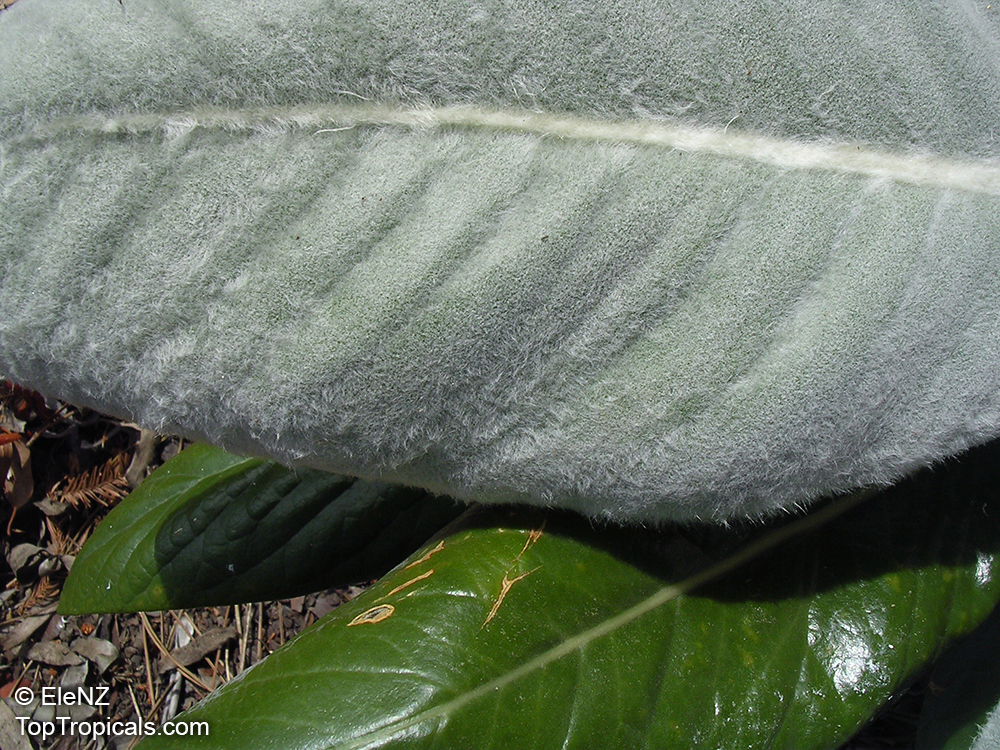Thistle - Plant Encyclopedia Results
Top Tropicals Plant Encyclopedia
| Number of plants found: 7 |
Botanical name: Acanthus sp.
Common names: Acanthus, Bear's Breeches, Mountain Thistle, Alligator Plant
Family: Acanthaceae
Origin: Mediterranean Basin, Asia










Acanthus sp., also known as Acanthus, Bear's Breeches, grows in full sun to partial shade and will thrive in most soils, provided they are well-drained. It is a thinly branched unusual perennial with interesting foliage, basal clusters of oblong to lance-shaped glossy, dark green leaves reaching up to 12 inches long. The leaves have silver marks and wavy margins. It produces showy pink flowers in the summer to fall.
The plant needs regular watering, but should not be over watered, as this can lead to root rot. It is a deciduous plant so it will lose its leaves during the winter months. It is a somewhat spiny, but attractive plant. For colder regions, it is recommended to grow Acanthus in a pot and move them indoors once it gets too cold to leave the plant outside. In these cases the plant should be placed in a south-facing window and watered regularly.
See picture of alligator skin.
Recommended Fertilizer: SUNSHINE Megaflor - Bloom Nutrition Booster
Last one
Botanical name: Echinops adenocaulos
Common name: Globe Thistle
Family: Asteraceae






They form clumps of deeply divided, spiny leaves, which are gray-green above and fuzzy-white beneath. They produce round, compact heads of tiny pale blue or grayish-white flowers, resembling thistles, atop gray-white stems in late summer. Globe Thistles can live in any well-drained soil as long as it isn't too rich. They will survive in poor, dry soil. They should be in a position with full sun. These plants can be increased by seeds or division in the fall, or by root cuttings in the winter. Varietes: E. Ritro, E. Bannaticus, E. Gmelinii and E. Sphaerocephalus.
Botanical names: Senecio fulgens, Kleinia fulgens
Common names: Orange thistle, Coral senecio
Family: Asteraceae
Origin: KwaZulu-Natal, Mozambique and Zimbabwe






Senecio fulgens, commonly known as Orange Thistle, is a small shrub native to KwaZulu-Natal, Mozambique and Zimbabwe. It grows to a height of 2-5ft and thrives in full sun and dry conditions. Its ornamental foliage and brilliant yellow and orange flowers make it a valued garden plant, and it also attracts butterflies and hummingbirds. The best time to sow seed is in autumn or winter, and it can successfully be grown in USDA zones 9-11.
When grown in a pot in colder areas, Senecio fulgens needs to be kept in a sunny spot and watered sparingly. For best results, choose a pot with drainage holes and use a well-draining soil mix. Water only when the surface of the soil feels dry to touch, as overwatering can cause root rot and other health issues. During the winter months, it may go dormant and lose its leaves. This is normal and no additional water is needed during this time.
Fertilizing can be done in the spring, using an all-purpose fertilizer. To encourage bushier growth, prune Senecio fulgens throughout the growing season. During the dormant winter period, it can be trimmed down to the desired shape.
Senecio fulgens is a stunning addition to any garden and is surprisingly easy to care for. By following the proper care and planting guidelines, you can have a beautiful shrub that not only provides vibrant colors throughout the season but also attracts wildlife.
Botanical names: Silybum marianum, Carduus marianus
Common names: Mary Thistle, Milk Thistle
Family: Asteraceae
Origin: India













A purple flower with prickly leaves whose name comes from the white veins on its leaves which exude a milky sap when broken.
Among all known herbal remedies, Milk Thistle finds its place as the leader in herbs to treat liver disease.
Botanical name: Carthamus sp.
Common names: Safflower, Carthamine, Sallflower, Beni, Chimichanga
Family: Asteraceae
Origin: India to China











Safflower is a highly branched, herbaceous, thistle-like annual plant. Carthamus tinctorius is commercially cultivated for vegetable oil extracted from the seeds. Plants are 12 to 59 in tall with globular flower heads having yellow, orange, or red flowers.
Botanical name: Cynara cardunculus
Common name: Artichoke
Family: Asteraceae
Origin: Mediterranean









The Globe Artichoke (Cynara cardunculus var. scolymus) is a perennial thistle originating in Southern Europe around the Mediterranean. It grows to 1.4-2 metres (4.6-6.6 ft) tall, with arching, deeply lobed, silvery, glaucous-green leaves 50-82 centimetres (20-32 in) long. The flowers develop in a large head from an edible bud about 8-15 centimetres.
Botanical name: Oldenburgia grandis
Common names: Mountain Hunchback, Rabbit's Ears, Lamb's Ears, Donkey's Ears
Family: Asteraceae
Origin: Southern Africa





Oldenburgia grandis is a shrub or small, gnarled tree. The emergent leaves are densely and completely felted with white hair. The flower-heads are borne on long, stout, velvety white stems (peduncles), which emerge from the centre of the rosette of leaves. Each flower-head resembles a giant thistle with its short, wide, purple brush covered thickly with velvety white hairs.
Use link to repeat this search:
https://toptropicals.com/cgi-bin/garden_catalog/cat.cgi?find=Thistle&search_op=and&keyword_op=and&language=e&number=10
&no_change_lang=1&user=tt&sale=1&first=0
